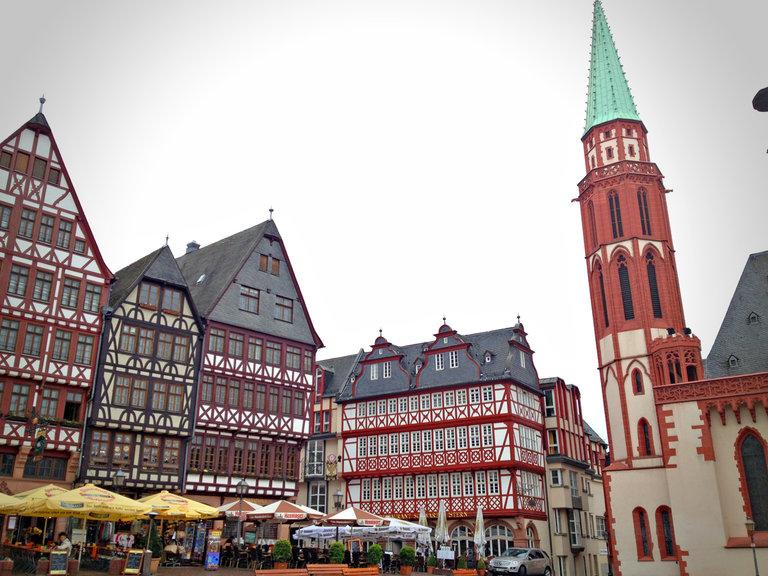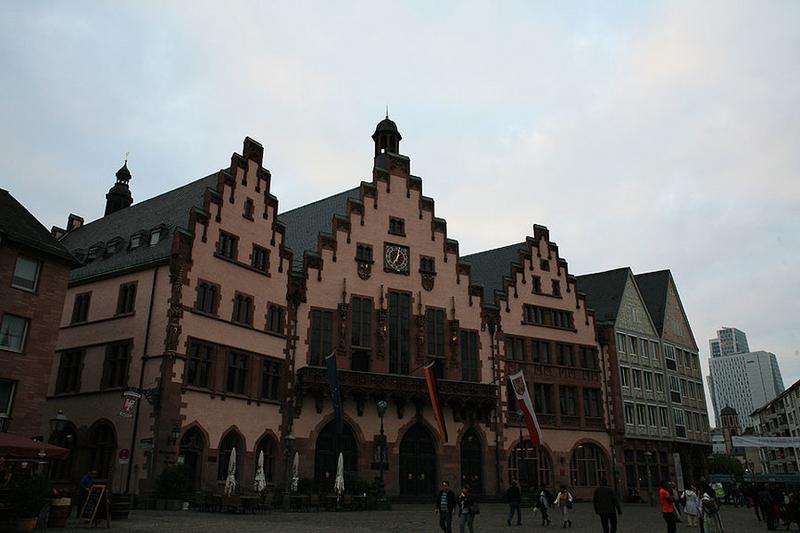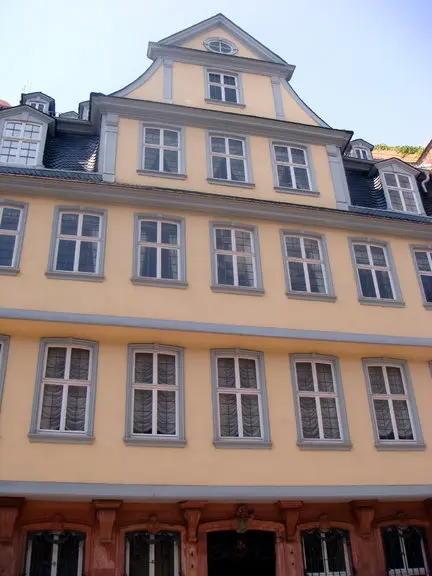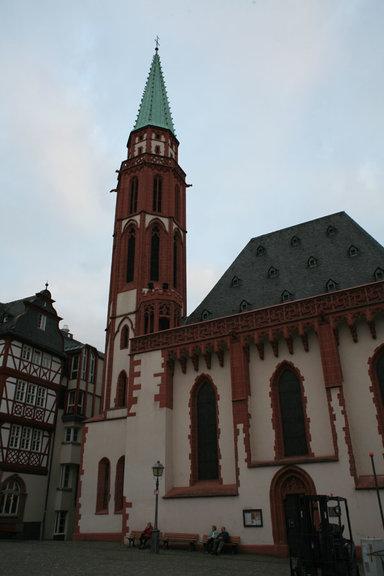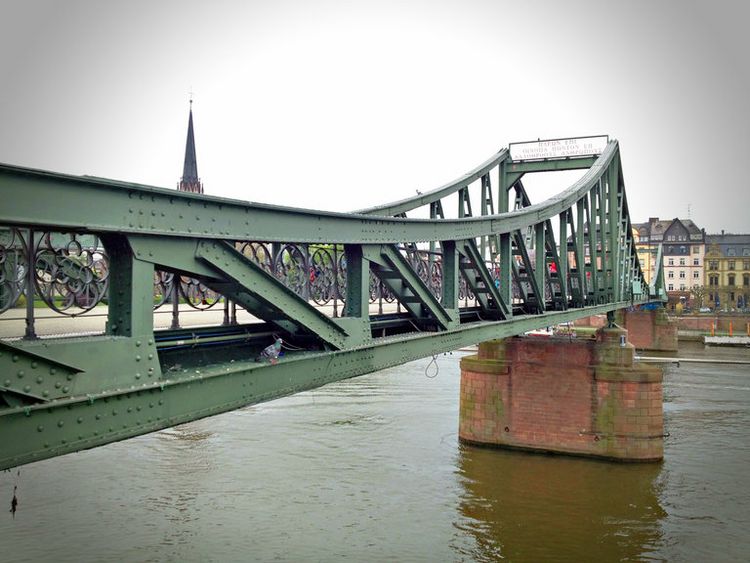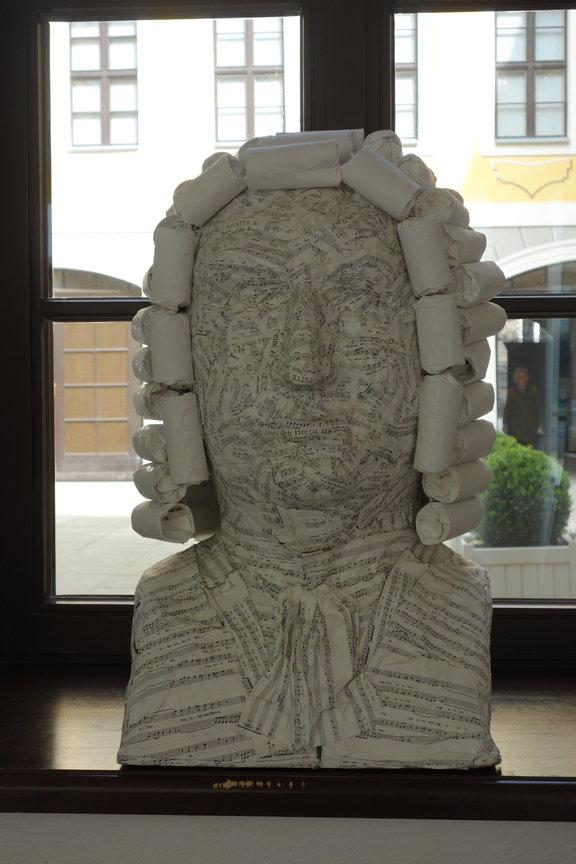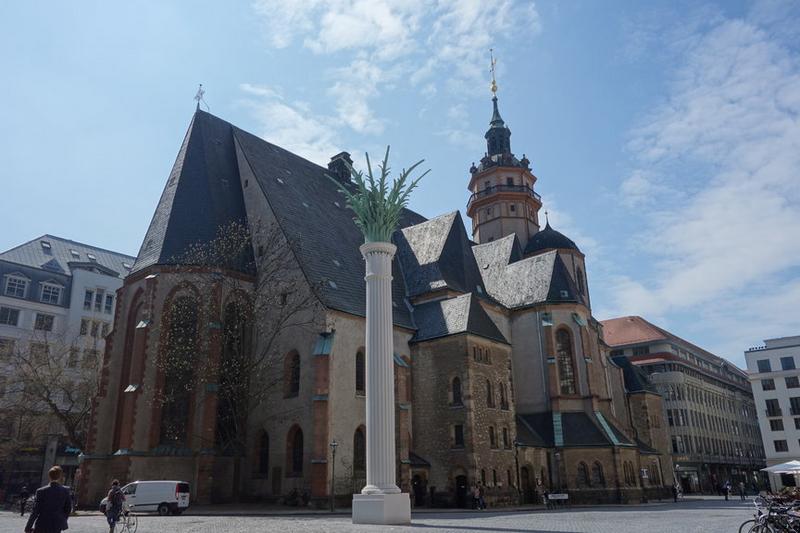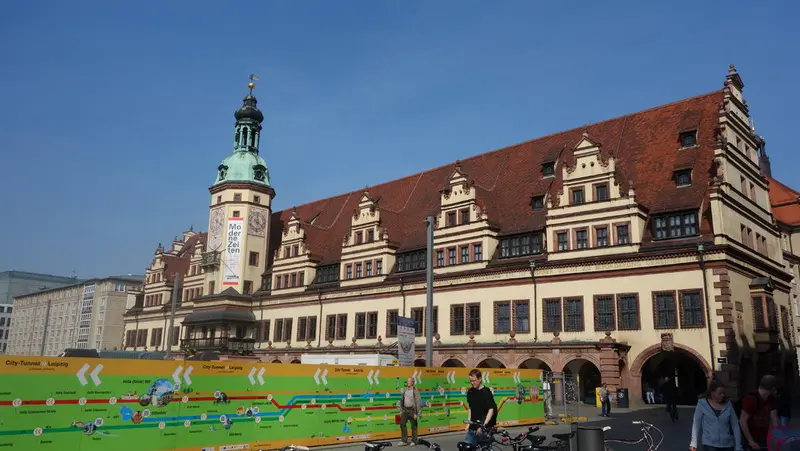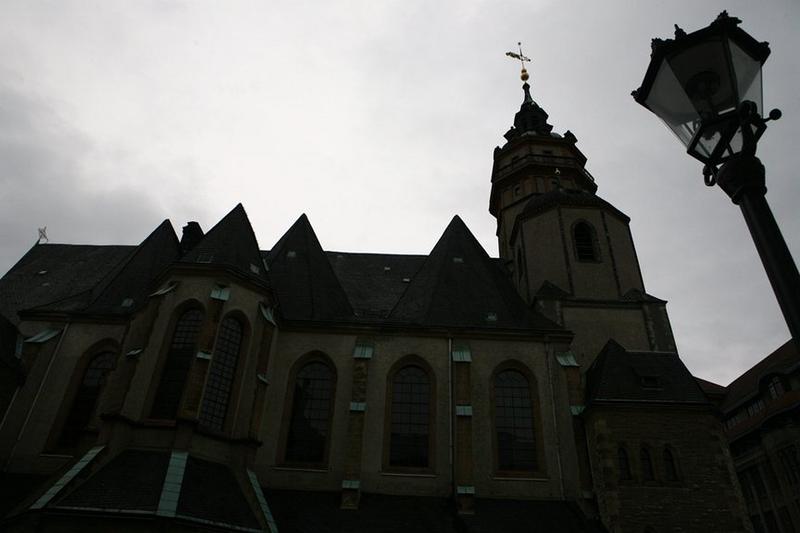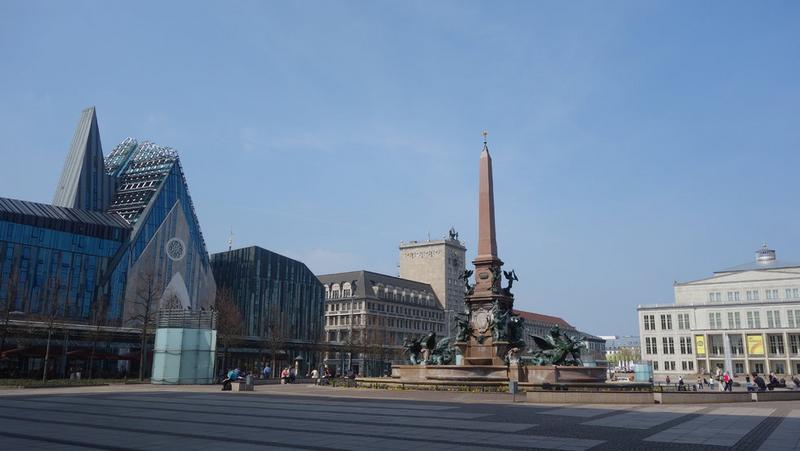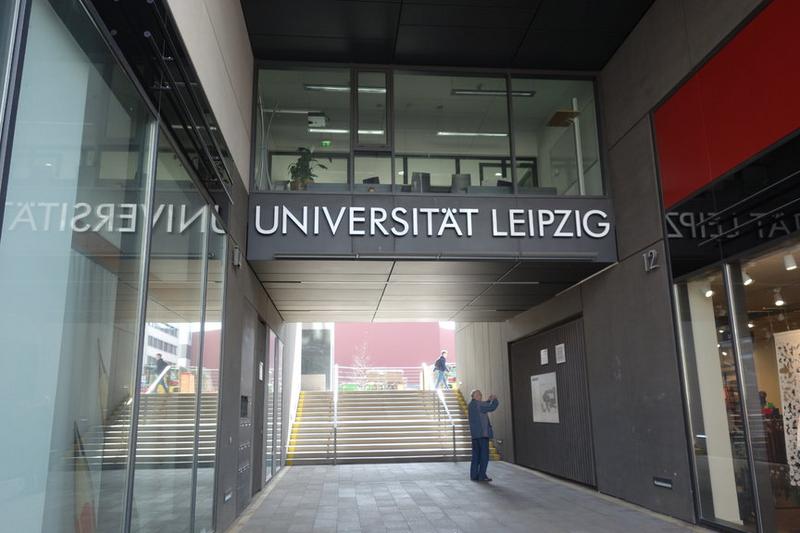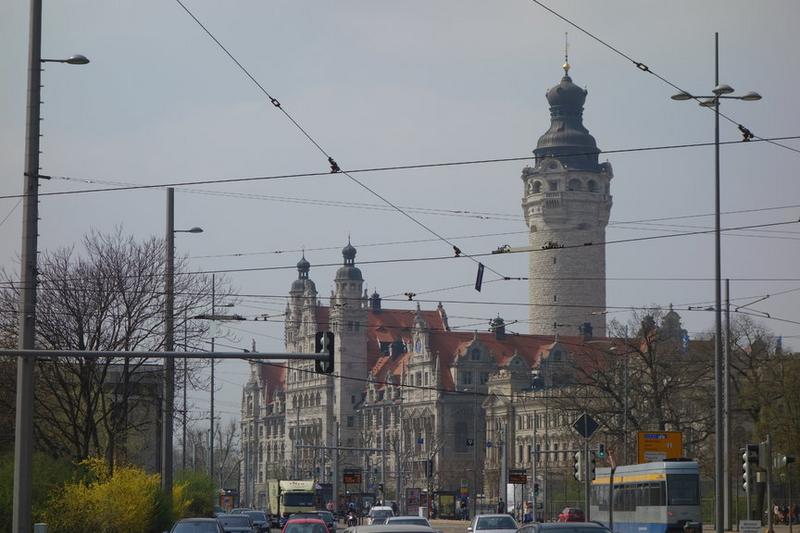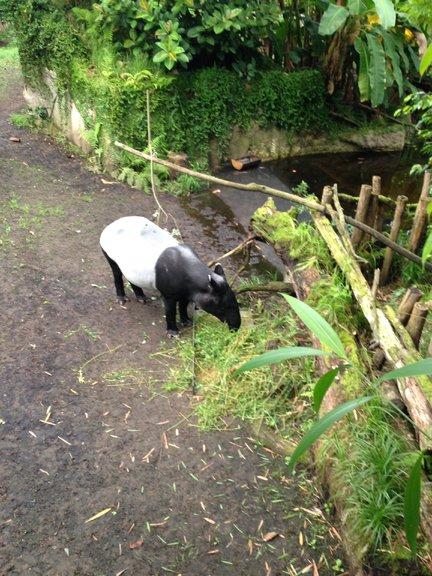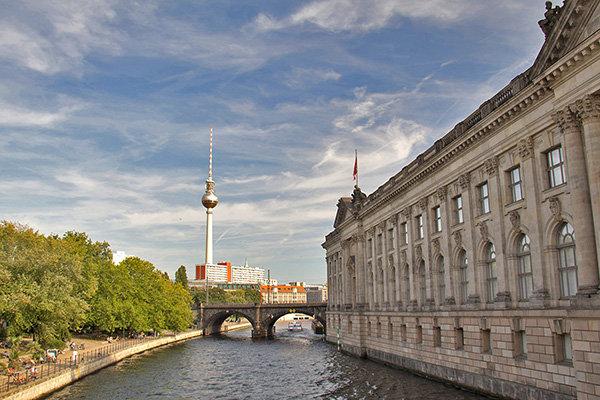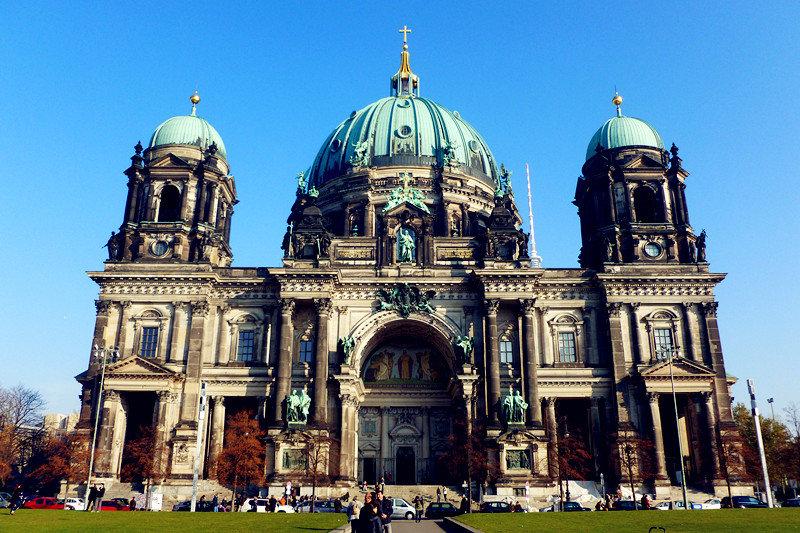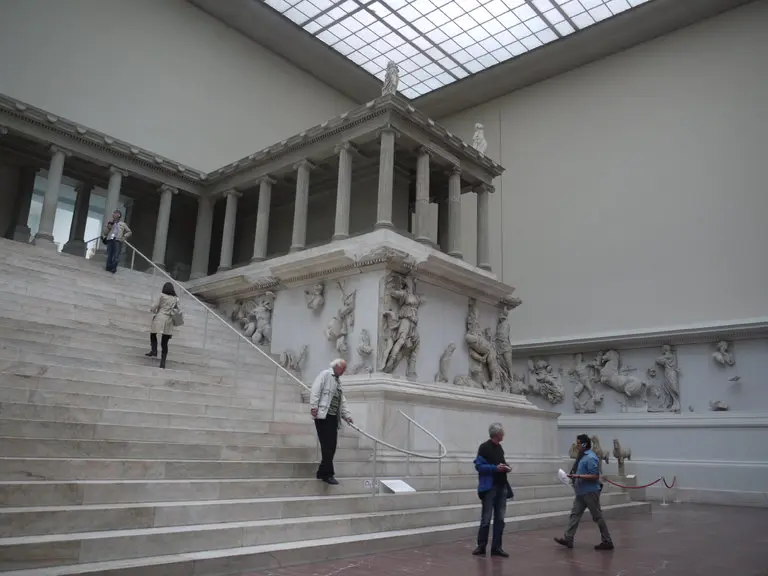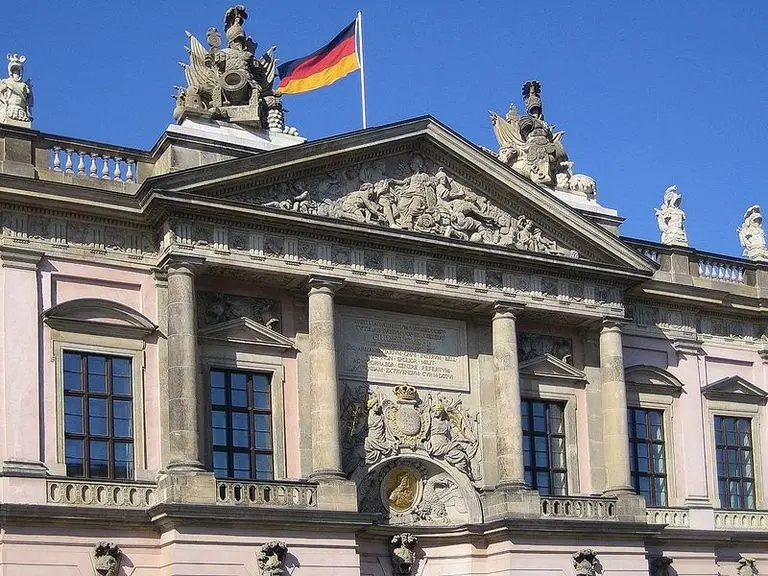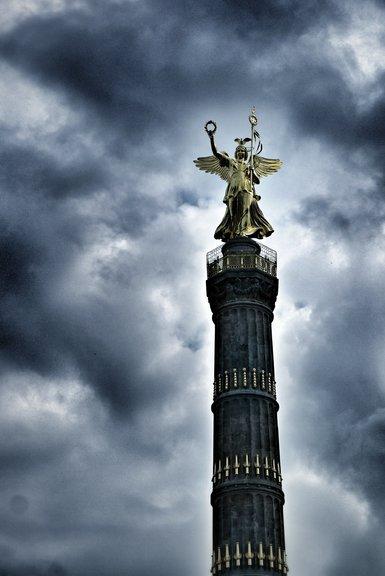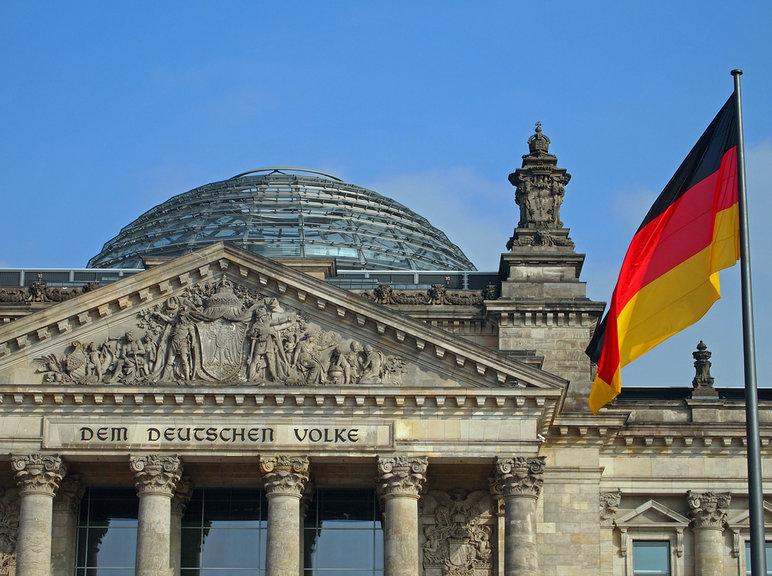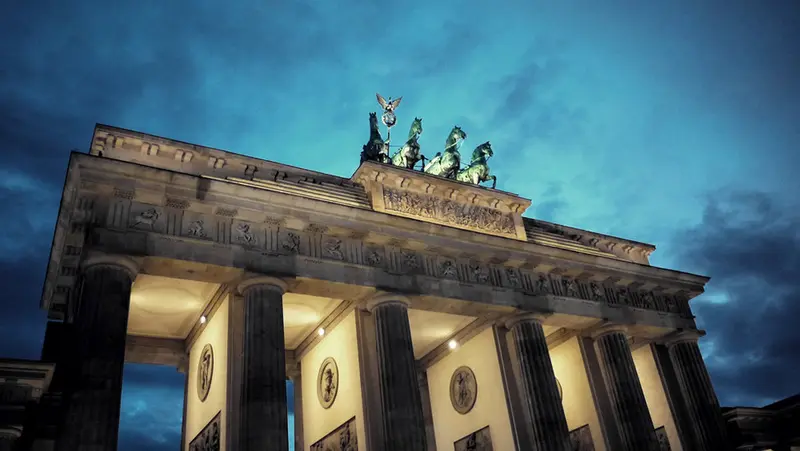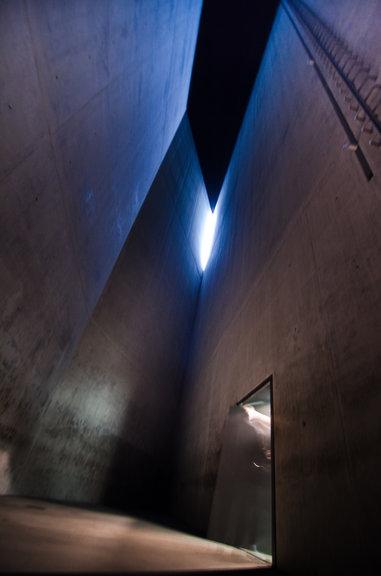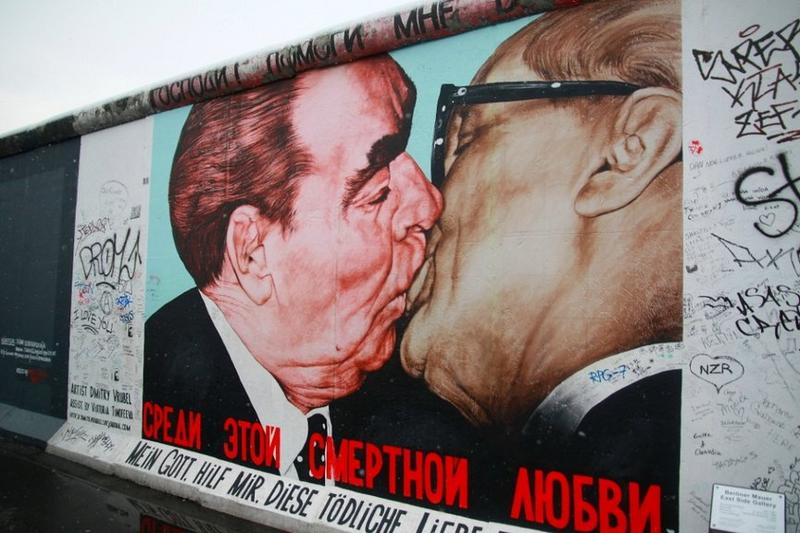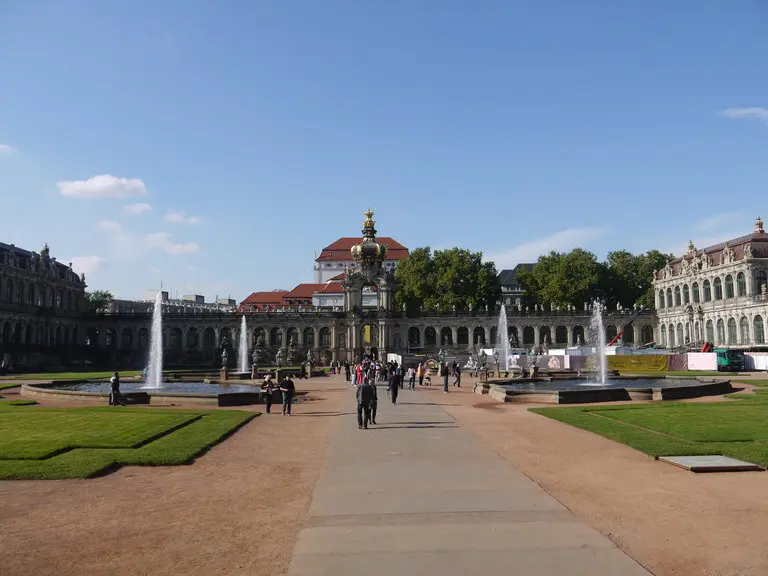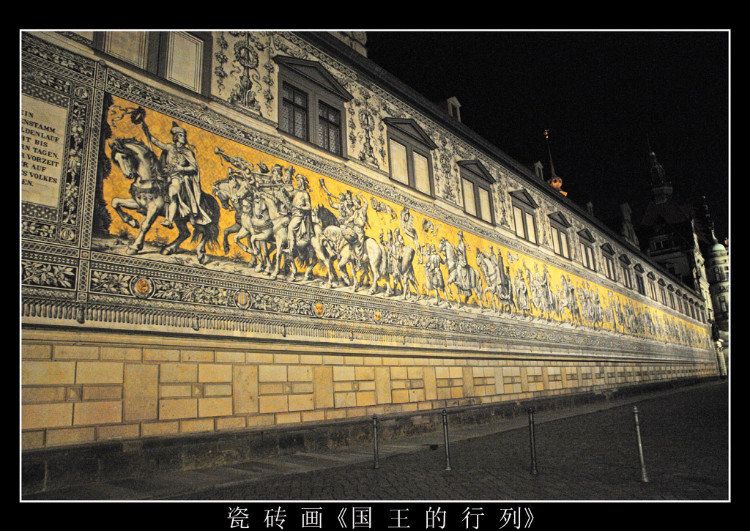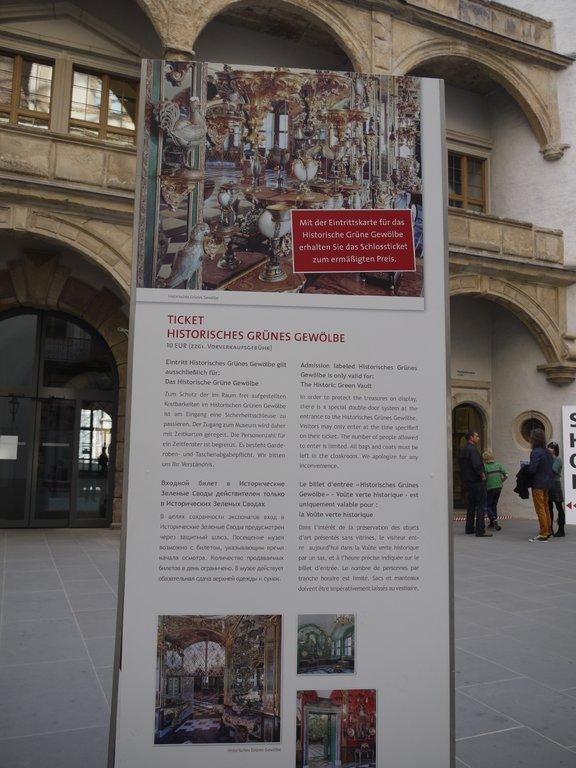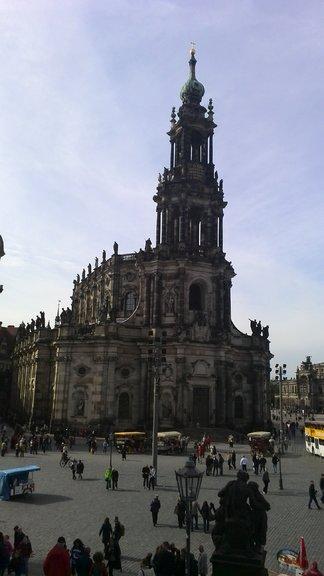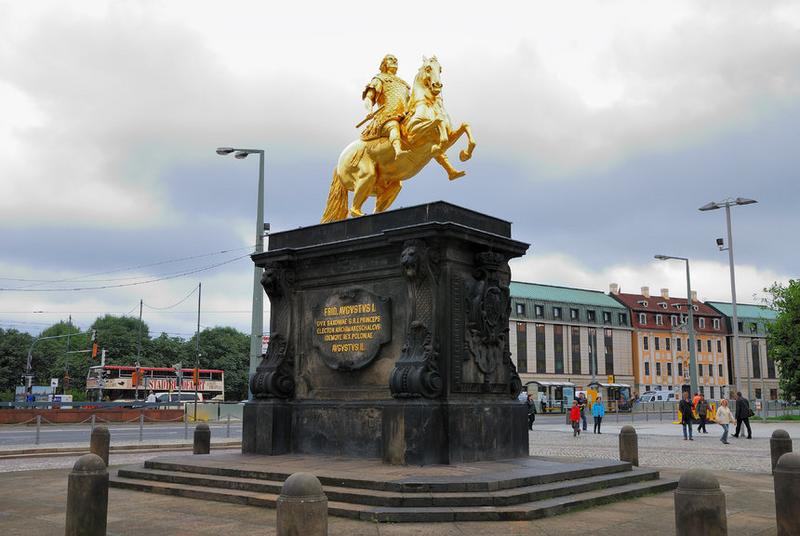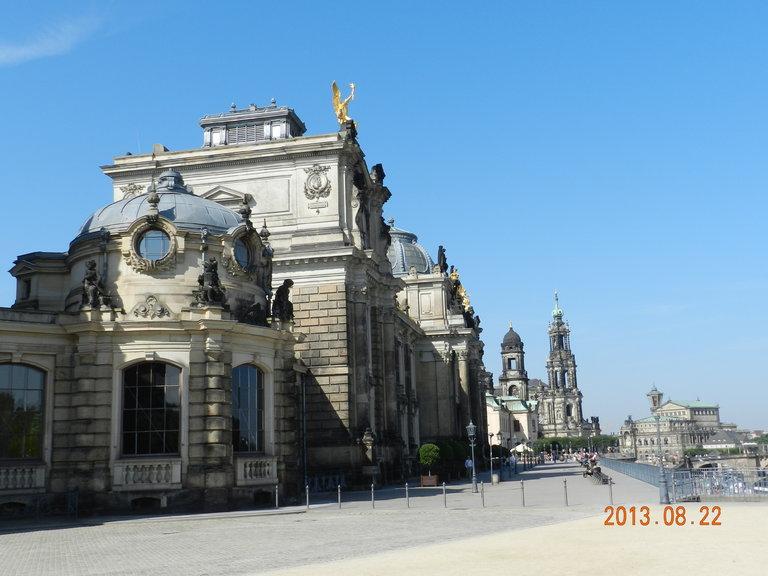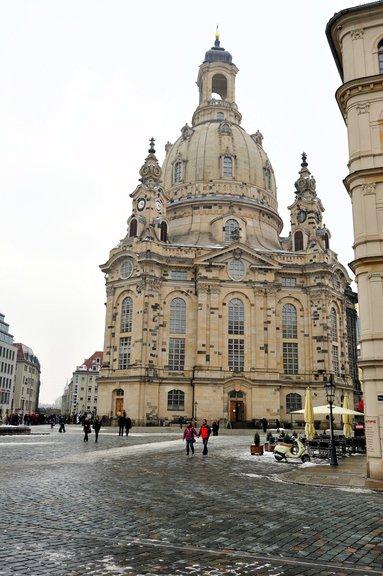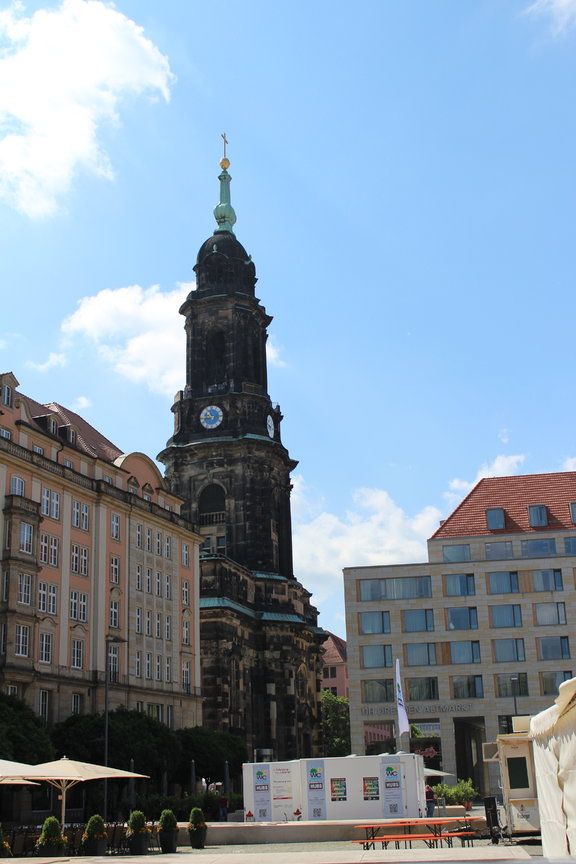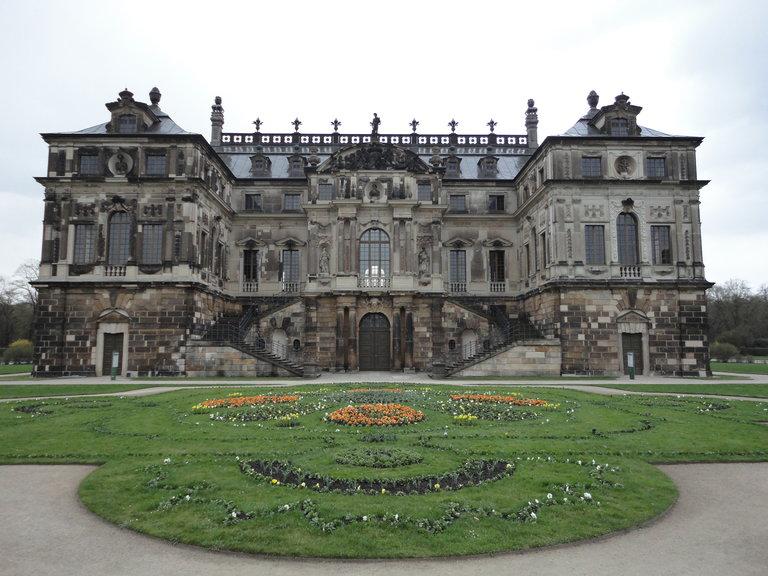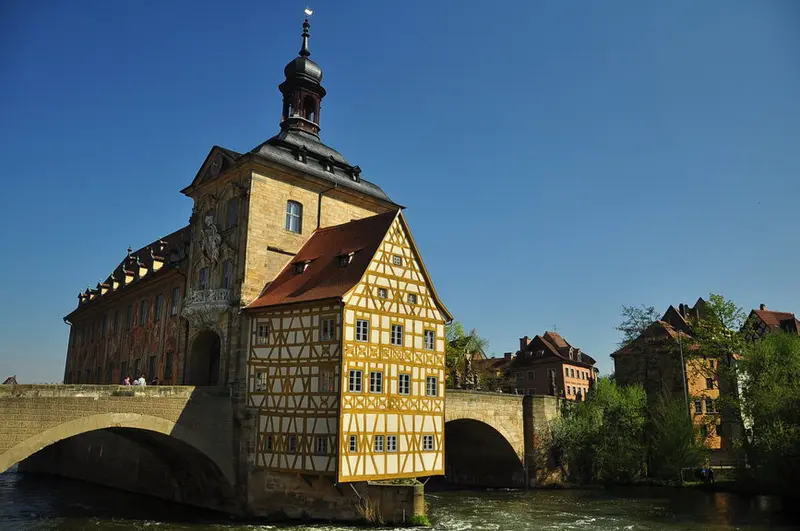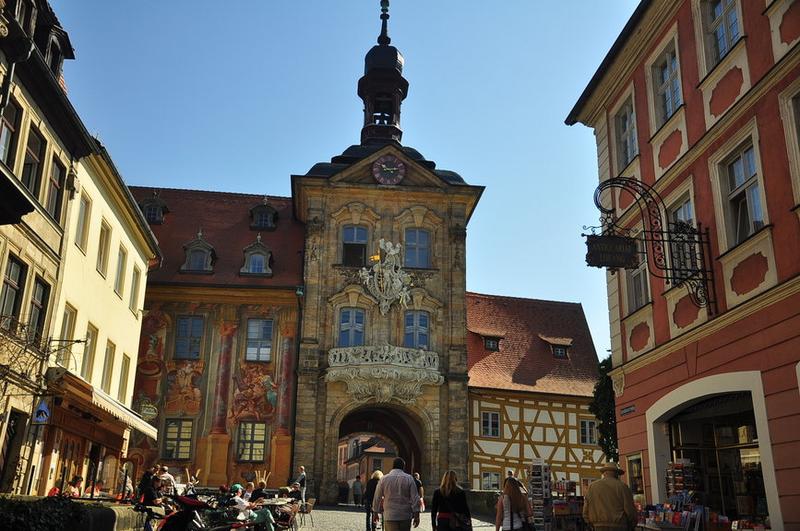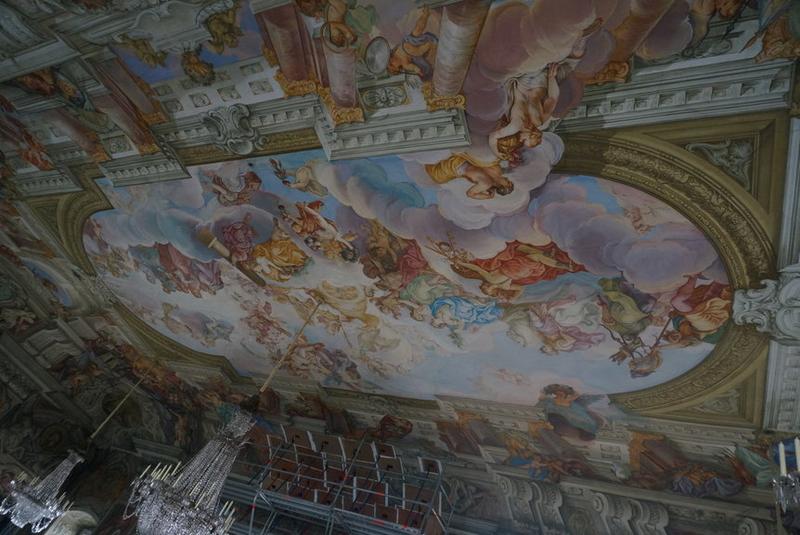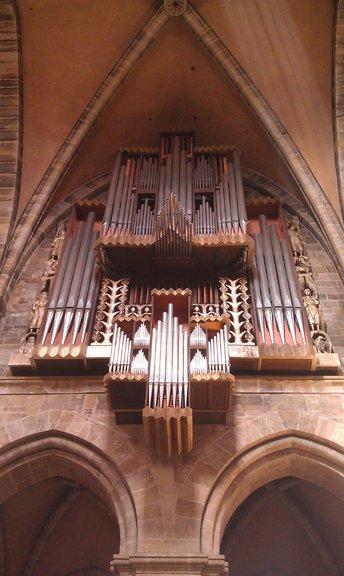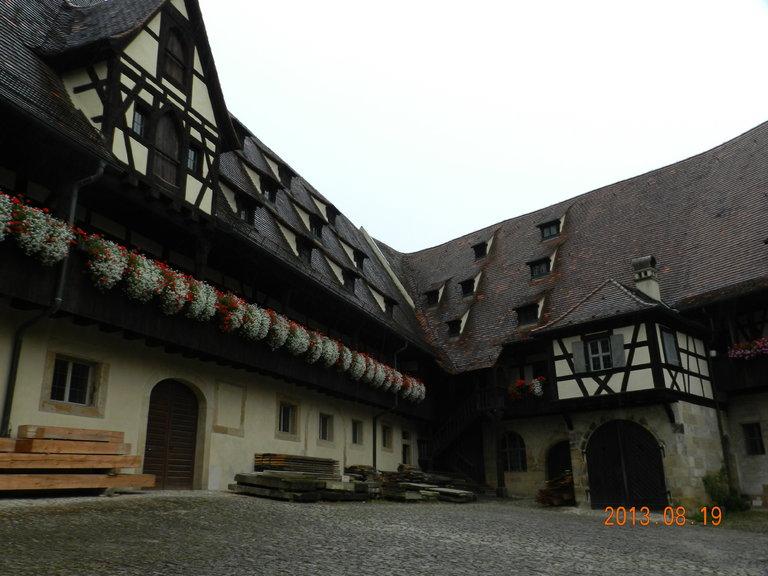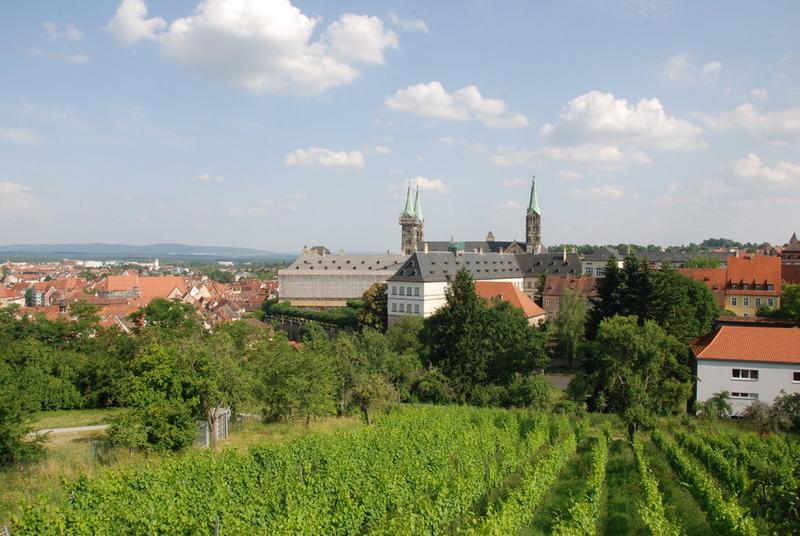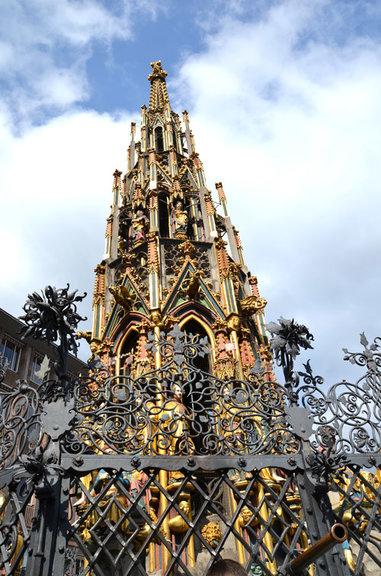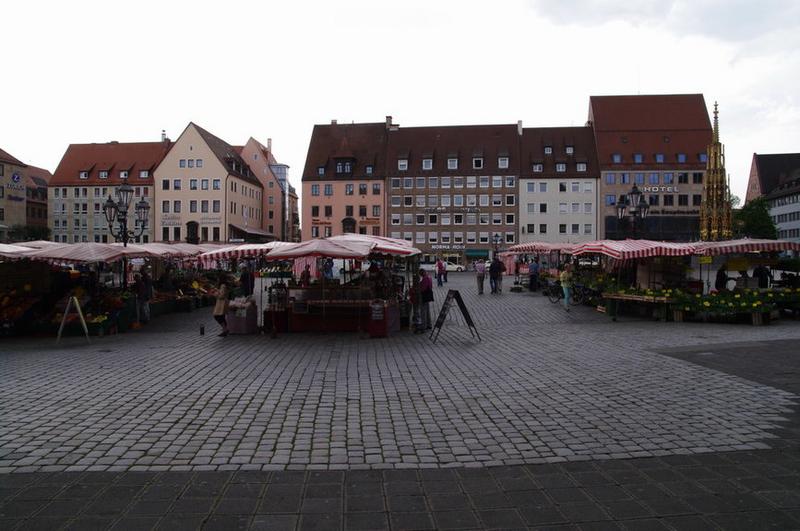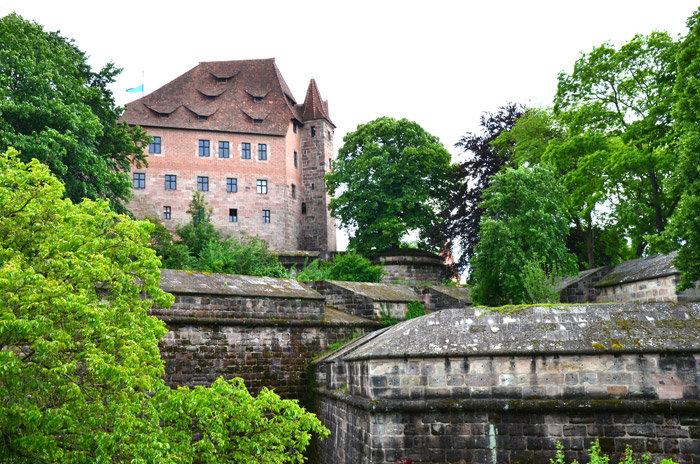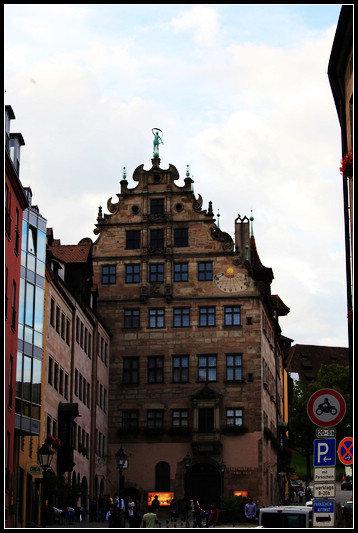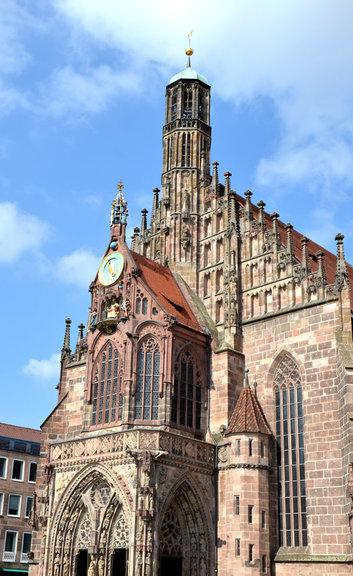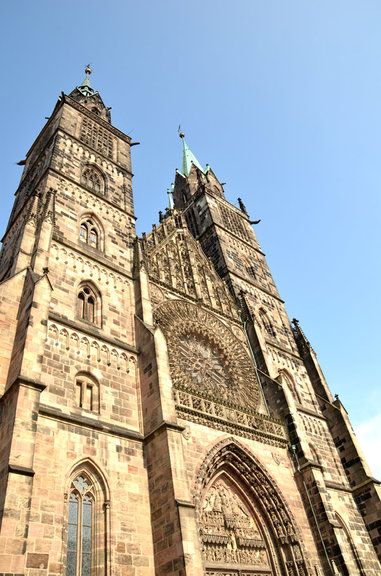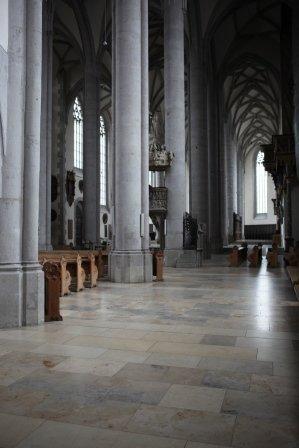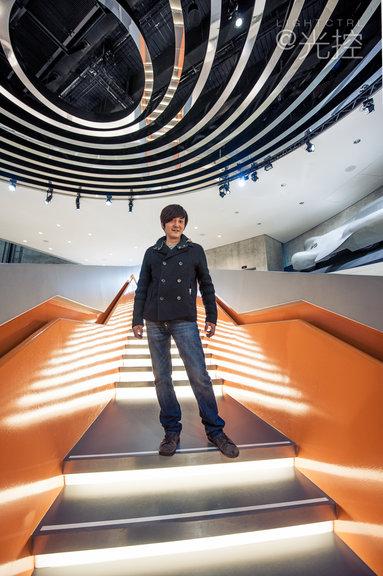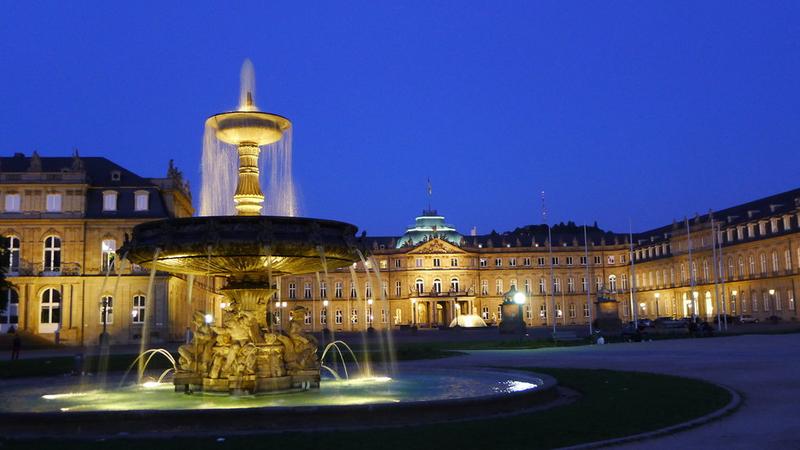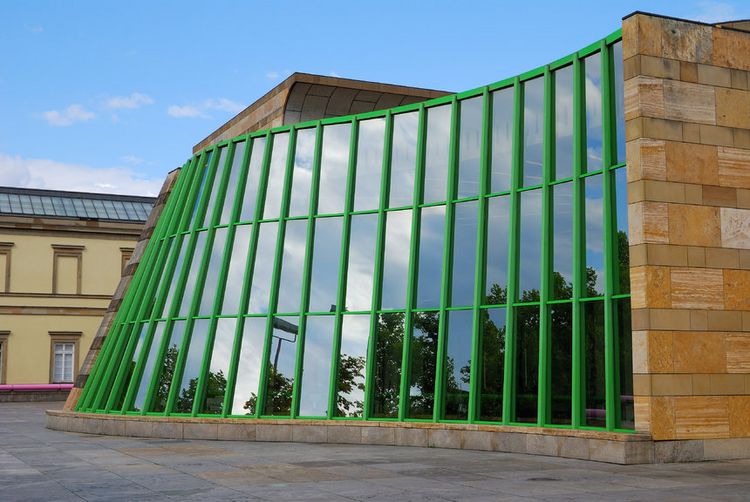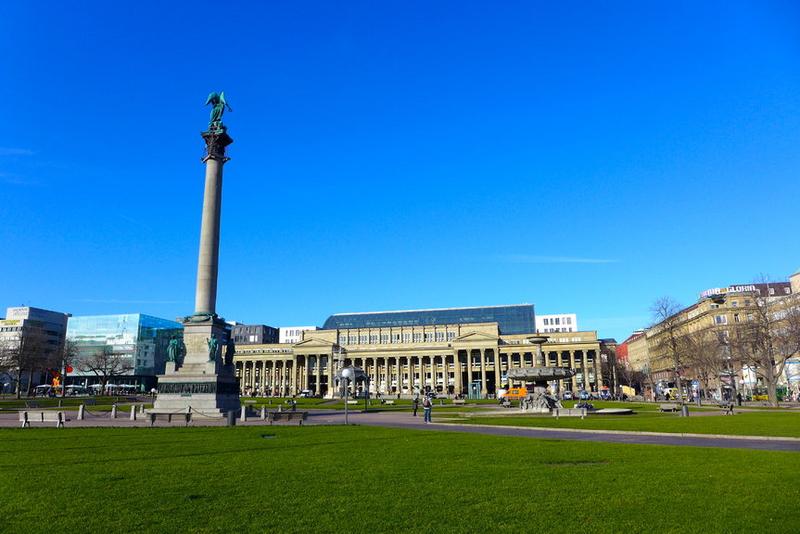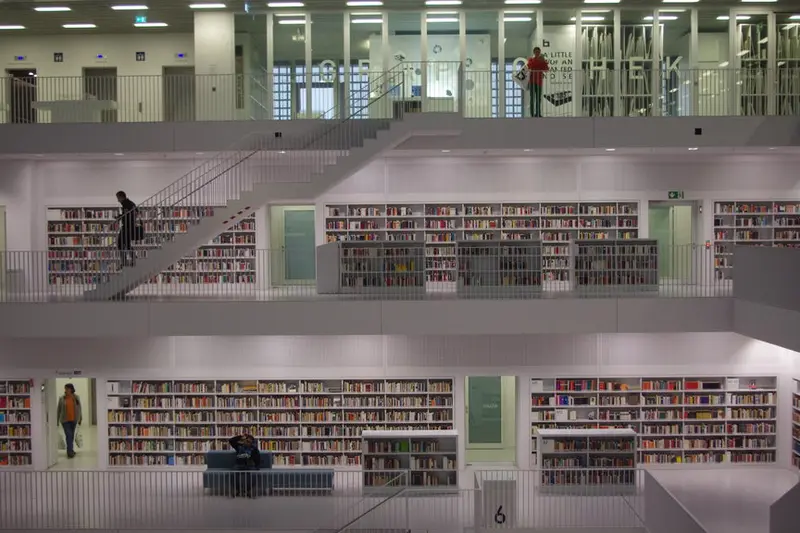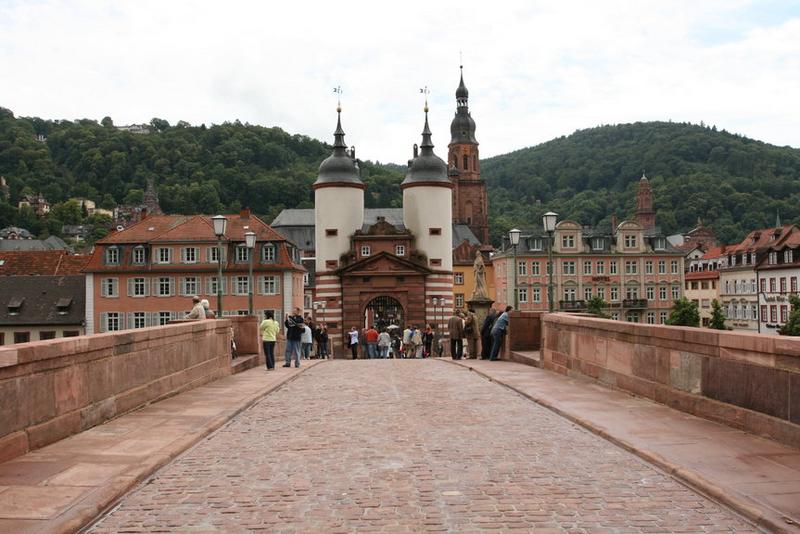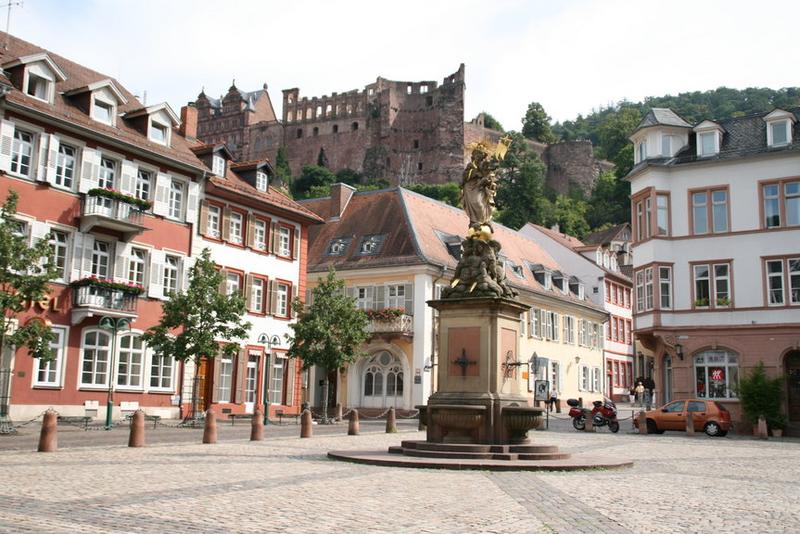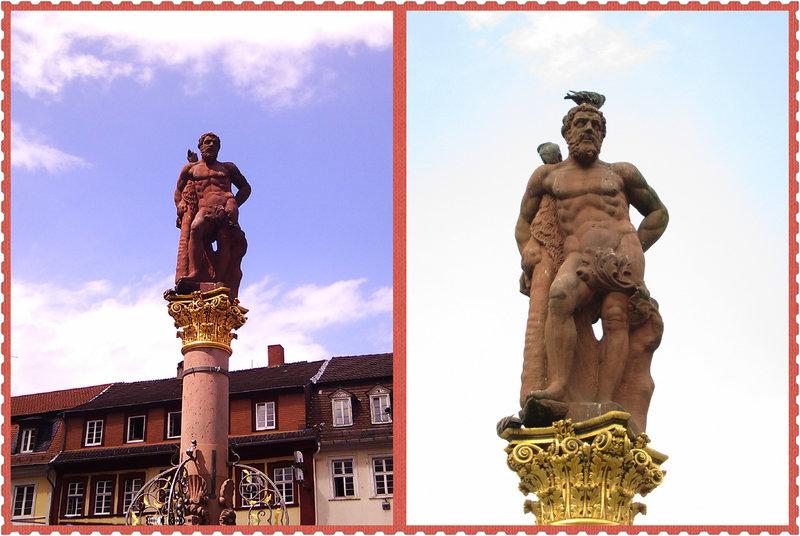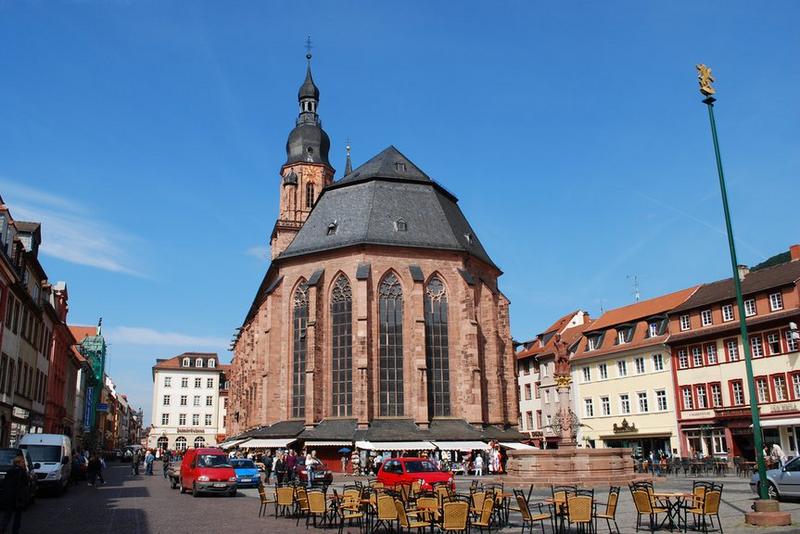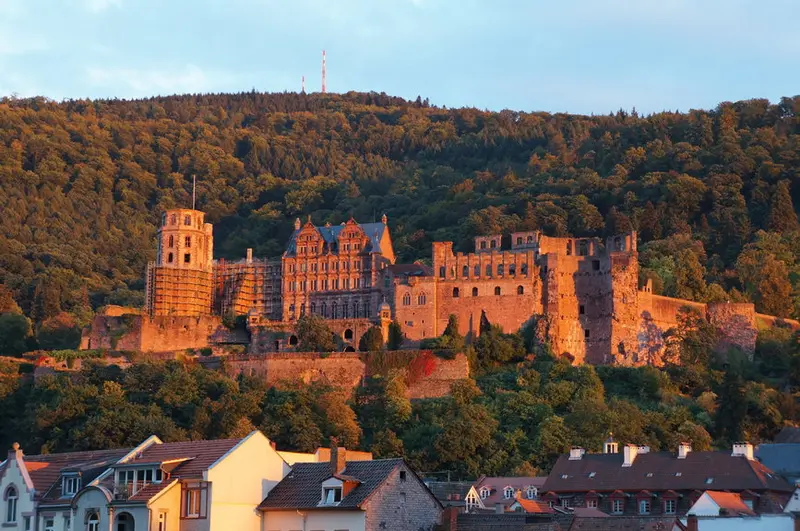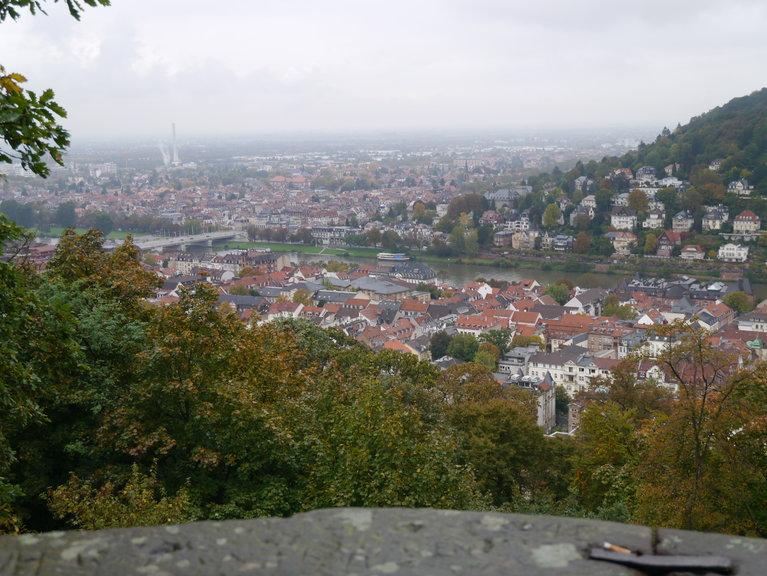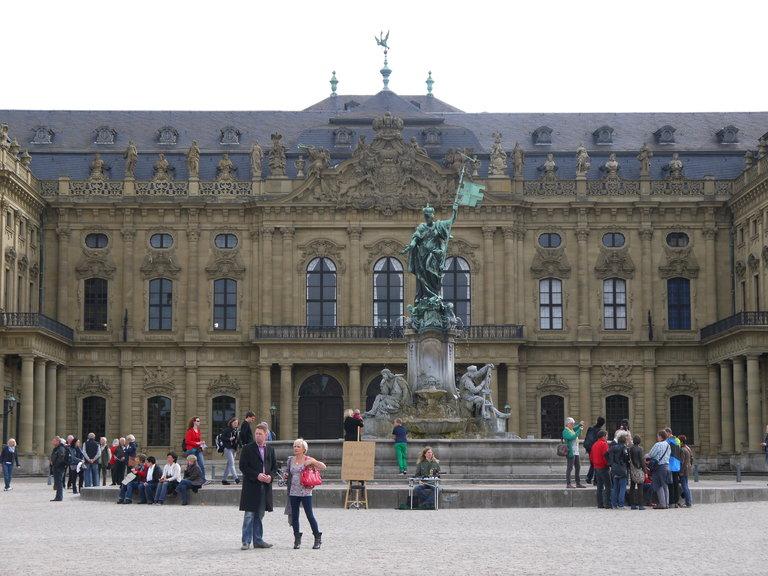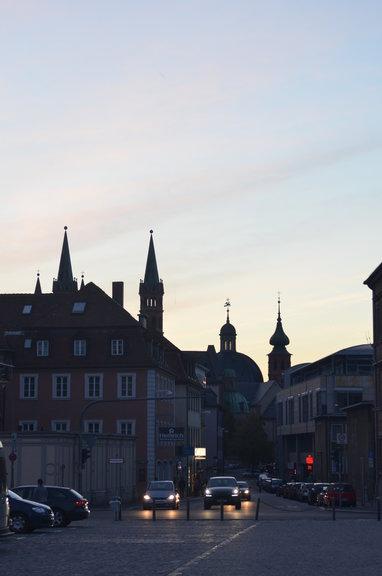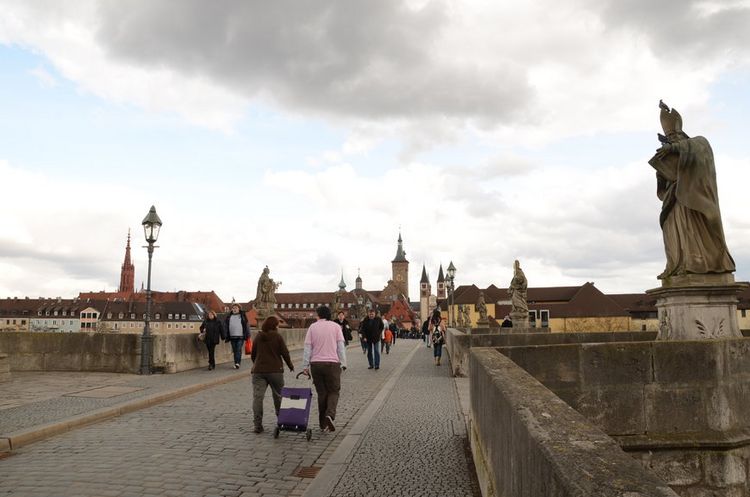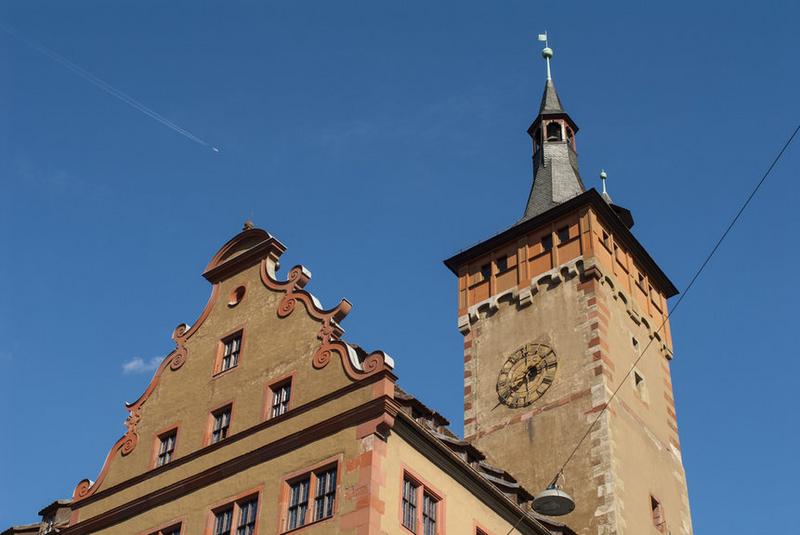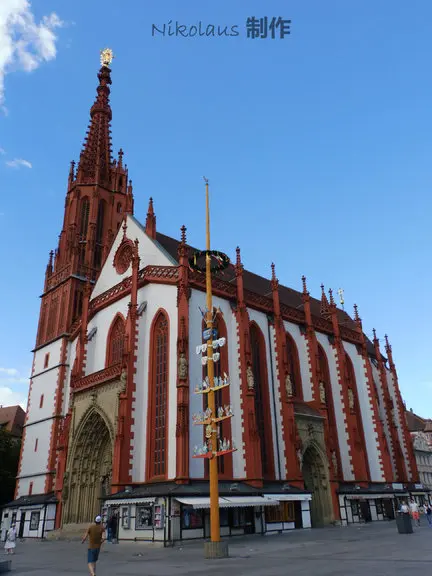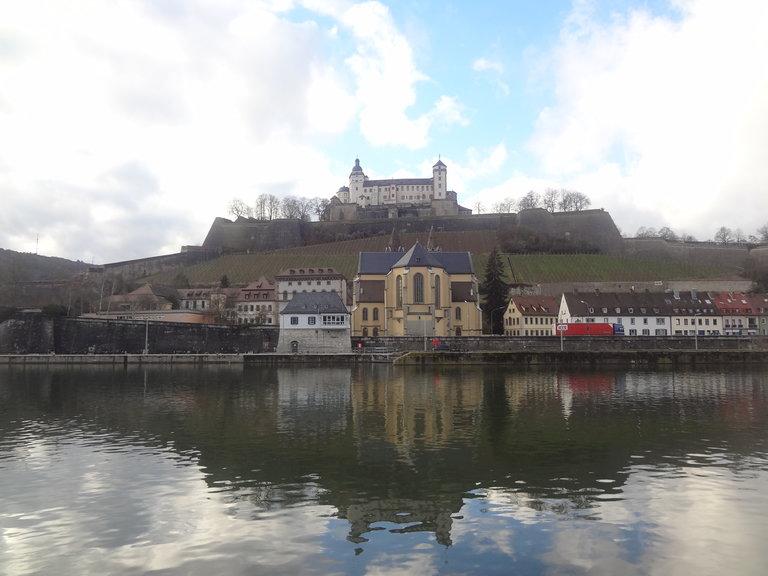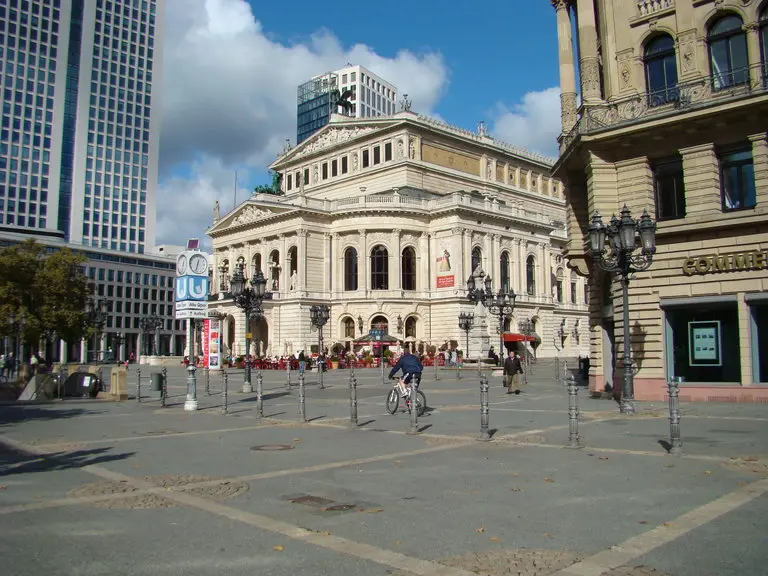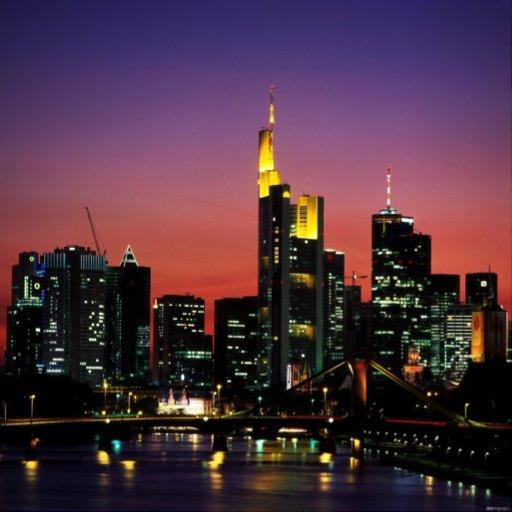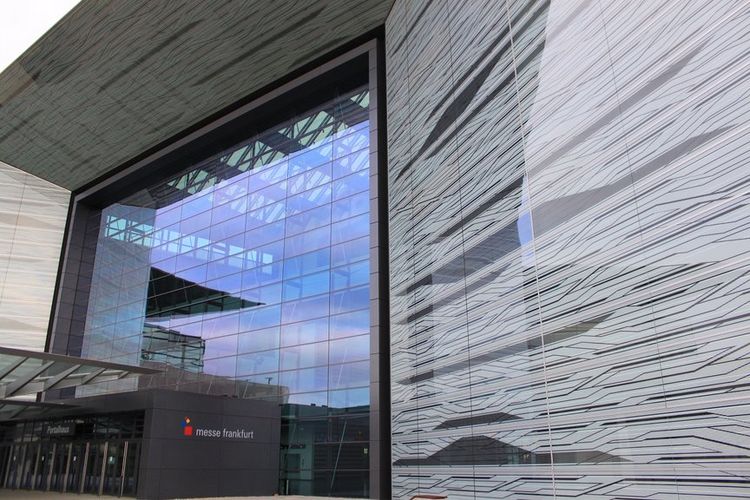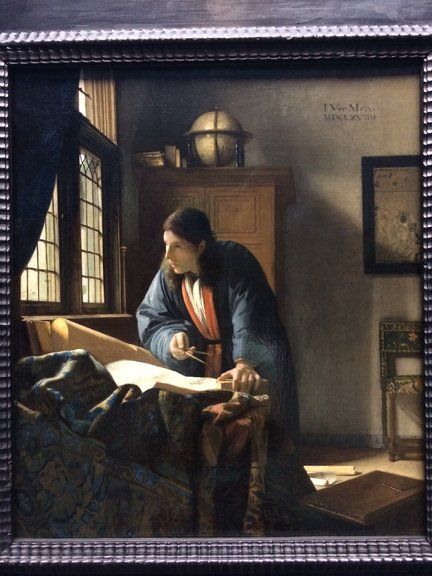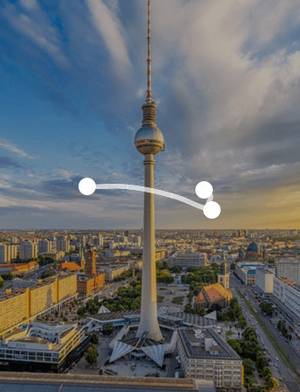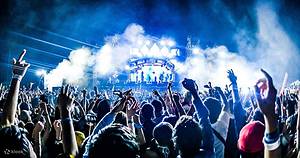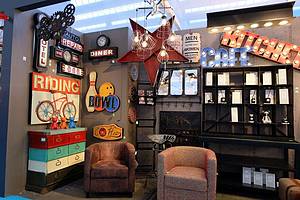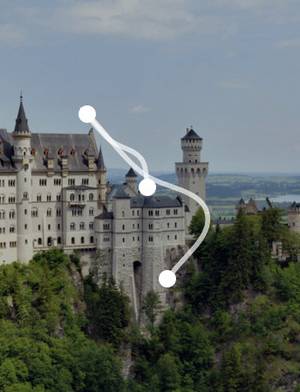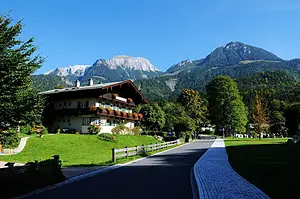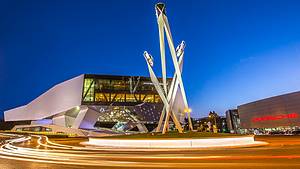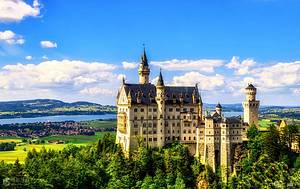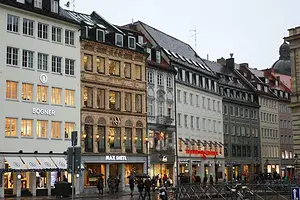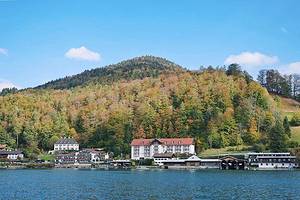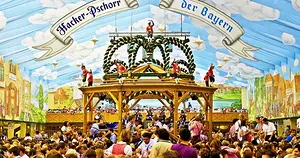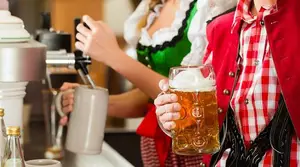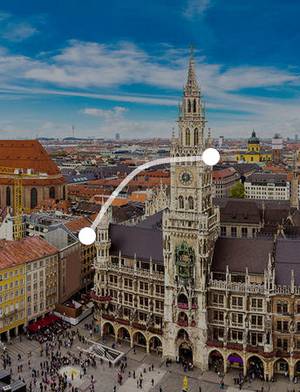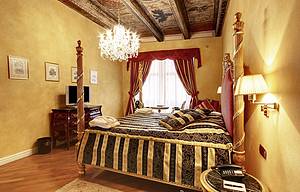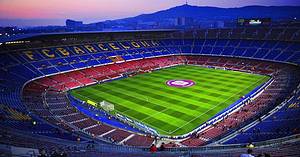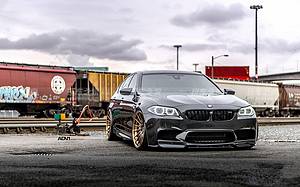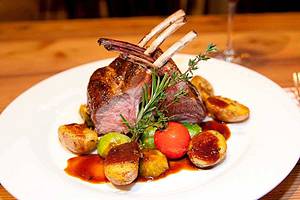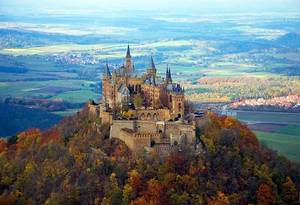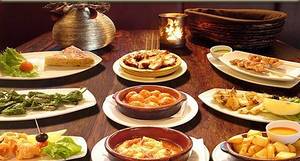Fifteen-day self-drive tour in eastern Germany
10 cities |
75 attraction(s) |
total distance 99
km
 TIPS
TIPS
Day1
Day2
Day3
Day4
Day5
Day6
Day7
Day8
Day9
Day10
Day11
Day12
Day13
Day14
Day15
Day1: Frankfurt
7 attraction(s) ·
3 km
1
Frankfurter Romer
The Roman Square is the town hall square in Frankfurt since the Middle Ages. Located in the center of the old town of Frankfurt, north of the Main River bridge, the west side is the town hall, the southwest side is the Weitheim residence, a beautiful residential building in the late Renaissance style (1600). The south side is the St. Nicholas Church built in the 13th century, made of red sandstone. The east side is the half-timbered houses built between the 15th and 18th centuries. The north side is a stone house built in the style of an Italian palace (1464). In the center of the square stands the Justice Fountain, built in 1543. The Frankfurt Cathedral, the birthplace of the city, is just 200 meters to the east. In 1944, the square was heavily bombed by the British Air Force and was almost completely destroyed, but was rebuilt after the war.
1
km
2
The Frankfurt City Hall was once a place for elections and coronations of emperors. It is a building located in the city center of Frankfurt's old town, consisting of three interconnected medieval-style private residences. The entire complex is named after one of the oldest and most luxurious houses called Zum Römer. It now serves as a registry office and the mayor's office. The Emperor's Hall inside preserves portraits of 52 rulers. Serving as Frankfurt's earliest government office, it became the City Hall in 1404 and was restored to its original appearance in the 1980s. It is a typical German-style architecture and also one of the symbols of Frankfurt. The Roman Square in front of it is worth a visit.
1
km
3
This is the birthplace of the famous German poet Johann Wolfgang von Goethe, beloved by the people (August 28, 1794). He spent his youth here and wrote the famous "The Sorrows of Young Werther" and the opening of "Faust" here. Adjacent to Goethe's former residence is the Goethe Museum.
The original residence, built in the 17th century, was destroyed in the flames of World War II but was later rebuilt according to its original design. The furnishings in the kitchen, bedroom, and living room of the residence reflect the artistic style of residential decor in the late Baroque period. Goethe's study is located on the second floor, maintaining the appearance during his lifetime.
The Goethe Museum exhibits a large number of prints, paintings, and busts from the late Baroque period, classical, romantic, and Biedermeier styles of the 18th and 19th centuries. These works vividly depict Goethe's relationship with artists such as Johann Heinrich Füssli, Caspar David Friedrich, and Frankfurt painters. The public organization, Free German Cathedral Council, is responsible for maintaining Goethe's parents' residence, the Goethe Museum, the Poet's Archive, and a research library where visitors can see important and valuable literary documents and prints.
1
km
4
St. Paul's Church is an elliptical Protestant church built in 1789 and completed in 1833. It served as the location for the Frankfurt National Assembly from 1848 to 1849. On May 18, 1848, the National Assembly held its first session here, hence its name "St. Paul's Church Assembly." By 1849, the St. Paul's Church Constitution was drafted. Due to opposition from Prussia and Austria, the National Assembly in St. Paul's Church was dissolved on May 30, 1849. In 1852, St. Paul's Church was restored for religious purposes. During WWII, St. Paul's Church and most of the inner city of Frankfurt were almost destroyed. It was rebuilt after the war as a symbol of freedom and the cradle of Germany, and reopened on the 100th anniversary of the Frankfurt National Assembly. Due to funding limitations, there have been many changes to its interior structure. It is no longer used as a church but as a venue for various exhibitions and events, such as the famous German Book Fair and Nobel Peace Prize ceremony during the Frankfurt Book Fair.
1
km
5
This is one of the most famous churches in Frankfurt, built for St. Bartholomew in 1239 and became the official site of coronation for the Holy Roman Emperors in 1365. Ten emperors were crowned here between 1562 and 1792. A major fire in August 14, 1867, almost destroyed the entire church, which was then rebuilt in neo-Gothic style. However, it was heavily damaged again during World War II, and the current building was constructed in 1950-1953.
In summer, you can buy an ice cream cone, sit on the square in front of the church, and enjoy the slow-paced life in Europe.
1
km
6
Old St. Nikolai is a charming medieval Lutheran church, also known as Alte Nikolaikirche. It is worth a visit as everything around it is so charming and takes you back to the Middle Ages. The church is located at the intersection of two important trade routes, east-west and north-south, and was built to commemorate the patron saint Nicholas of medieval wholesalers and traders.
1
km
7
This steel-framed pedestrian bridge spans the Main River, connecting the southern and northern banks of Frankfurt. Construction of this Neo-Gothic style bridge began in 1869 and underwent multiple renovations before taking its current form in 1993.
Day2: Leipzig
7 attraction(s) ·
6 km
1
The Bach Museum is located in a Baroque building opposite St. Thomas Church, showcasing the composer's life in Leipzig.
1
km
2
Composer Johann Sebastian Bach served as a choir conductor here from 1723 until his death in 1750. His body is buried beneath a bronze tombstone near the altar.
3
km
3
One of the most famous buildings in Leipzig is the Old Town Hall, built in 1556 and now a city history museum. It has three floors, with a red stone archway at the bottom, a simple yellow wall in the middle, and a red tiled sloping roof on top. On the roof, there are six beautifully designed high attic towers, and the tall clock tower in the middle is the centerpiece of the square. This building is considered one of the most beautiful Renaissance buildings in Germany. In addition to displaying damaged church statues and a city model from 1823, the museum also has special exhibition rooms on the upper floor. At the entrance on the second floor, there are some shops in the reddish-brown stone archway selling souvenirs and cigarettes. Behind the Old Town Hall is the market square, where there is a statue of a young Goethe.
1
km
4
St. Nicholas Church is one of the most famous churches in Leipzig, and is nationally known as the center of the peaceful uprising during the 1989 Monday Demonstrations against the ruling of the Socialist Unity Party of Germany. The church was built around 1165 and initially had a Romanesque and Gothic architectural style. Its classic interior decoration is stunningly beautiful, with palm-like columns and colorful benches. Leipzig, also known as the city of St. Nicholas, was named after the patron saint of merchants and wholesalers when it was founded, and is located at the very center of the city, at the intersection of two historically important trade routes.
2
km
5
It is a square in the German city of Leipzig, located in the eastern city center. It is the largest square in the city and one of the largest squares in Germany. It was one of the most beautiful squares in Germany before it was destroyed during World War II.
1
km
6
Leipzig University, located in Leipzig, Saxony, Germany, was founded in 1409 and is one of the oldest universities in Europe. It is the second oldest university in Germany after Heidelberg University (founded in 1386). Other universities, such as the University of Cologne (1388-1798, rebuilt in 1919) and the University of Erfurt (1392-1816, rebuilt in 1994), were closed and reopened. From 1953 to 1991, Leipzig University was known as "Karl Marx University of Leipzig". Notable Chinese alumni include Gu Hongming, Cai Yuanpei, Lin Yutang, Zhou Peiyuan, and Xiao Youmei.
1
km
7
The Mädler Passage is one of the few well-preserved beautiful arcades. Today it houses numerous shops, bars, and restaurants, including the famous Auerbachs Keller. It is a modern shopping center and one of the liveliest places in downtown Leipzig. Near the exit of Grimmaische Strasse, there are statues of Faust, Mephistopheles, and some students. According to tradition, touching the foot of Faust will bring good luck.
Day3: Leipzig
3 attraction(s) ·
11 km
1
The New City Hall is the administrative building of Leipzig city since 1905, located at the southwest corner of the Leipzig inner ring road (Martin-Luther Ring).
4
km
2
Leipzig Zoo is home to many rare animals, allowing visitors to experience harmony between humans and nature. You can see Baikal seals basking in the sun, musk deer observing visitors with interest, and meerkats running around happily. The animals' living environments are designed to be as close to nature as possible. Four species of primates live in the world's largest primate park, while giraffes, antelopes, ostriches, and zebras inhabit the Kilimanjaro Savannah, with their "neighbors" being fierce African wild dogs and Angolan lions.
The Gondwanaland, the largest tropical rainforest exhibition in Europe within the zoo, is a must-see. Covering an area of 2.7 hectares, it showcases rainforest landscapes from Asia, Africa, and South America. The glass-roofed hall, with a steel frame, covers an area of 16,500 square meters and is home to over 40 animal species and 500 plant species. The temperature in the hall is maintained at 26-28 degrees Celsius, with about 80% humidity. It vividly portrays the era of the ancient supercontinent connecting Asia, Africa, and South America.
The aquarium, with over a hundred years of history, is a great destination for aquatic animal enthusiasts, offering stunning underwater views. Notably, the aquarium has a capacity of 35,000 liters and is one of the largest in Germany, featuring display tanks, animal enclosures, and panoramic shark tanks.
8
km
3
In the epic battle in 1813, nearly 100,000 soldiers lost their lives and played an important role in the war against Napoleon by the coalition of Prussia, Austria, and Russia. This monument is built to commemorate the fallen soldiers.
Day4: Berlin
5 attraction(s) ·
4 km
1
Berlin Museum Island is a small island where five museums are located. It was built between 1824 and 1930. In 1999, it was designated a UNESCO World Heritage site because of its cultural and architectural significance. The five museums are the Berlin Old Museum, followed by the New Museum, the National Gallery, the Bode Museum, and the Pergamon Museum, which together form Berlin's famous Museum Island. The Pergamon Museum is particularly renowned for its collection of large-scale historical buildings. Museum Island showcases the essence of German museums, including the Pergamon Museum, which displays ancient Egyptian history, the National Gallery, which houses works of world art masters, and the German Historical Museum. Located in the former East Berlin, the museums on the island were in a dilapidated state due to economic difficulties. After the reunification of Germany, the government invested a large amount of funds to restore all the buildings on the island.
1
km
2
The Berliner Dom is a Lutheran church in Berlin, Germany, built from 1894 to 1905, and was the designated church of the Hohenzollern dynasty of the German Empire. It is located on the eastern part of Museum Island in the city center of Berlin, with lavish interior decorations that include intricately designed columns, exquisite murals, and gilded capitals. The building has four levels, reaching a height of 114 meters. Although the Berliner Dom is sometimes mistakenly translated as 'Berlin Cathedral' in English, it is not a cathedral and does not have a bishop residing in it. Nearby, on Unter den Linden, is the cathedral of the Catholic Archdiocese of Berlin – St. Hedwig's Cathedral.
1
km
3
The iconic artifact of the Pergamon Museum is the Pergamon Altar, dating back to the 2nd century BC and originated from Pergamon (today's Turkish territory). It occupies an entire exhibition hall. In addition, there is also the Ishtar Gate from ancient Babylon, known for its colorful and vivid sculptures. Numerous artifacts from ancient civilizations and Islamic artworks are also on display.
1
km
4
The German Historical Museum (Deutsches Historisches Museum, DHM) was established in 1987 by German Chancellor Helmut Kohl and Berlin Mayor Eberhard Diepgen on the occasion of the 750th anniversary of the founding of Berlin. It is located in the oldest building on Unter den Linden street in central Berlin, the former Berlin Arsenal. In 2004, the museum's new wing, designed by I.M. Pei, was completed. In 2006, after the restoration of the Arsenal building, the permanent exhibition on the theme of "Images and Testimonies of Two Thousand Years of German History" was opened to the public.
2
km
5
The Bebelplatz is located in the middle section of Unter den Linden, about 150 meters south along Charlottenstraße. It is considered the most beautiful square in Berlin. The square has been planned since 1688 and has been rebuilt several times due to war. In the center of the square is the neoclassical Konzerthaus Berlin, and on either side are two very similar churches. The northern one is the French Cathedral (Französischer Dom), built in 1705 by Huguenots who fled to Berlin from France due to persecution. The southern one is the German Cathedral (Deutscher Dom), which houses some exhibitions on German history.
Day5: Berlin
5 attraction(s) ·
13 km
1
The Victory Column is located 2 kilometers west of Brandenburg Gate. It was built in 1873 to celebrate the victory in the Danish-Prussian War. At the top of the column is a gilded bronze statue of the goddess Victoria. The Victory Column is in the center of Tiergarten park, standing at 69 meters tall, offering a panoramic view of the city from its top. The surrounding Tiergarten park is the largest green lung in the center of Berlin. Nearby, there are attractions such as the Federal Presidential Palace at Bellevue Palace and the Haus der Kulturen der Welt. Additionally, the Victory Column serves as the site for New Year's fireworks and the famous Gay Pride Parade.
3
km
2
The Reichstag building, completed in 1894, served as the meeting place of the national parliament during the German Empire and the Weimar Republic. On the evening of February 27, 1933, the infamous Reichstag fire occurred, leading to the Nazi party's control of the parliament and ultimately plunging the country into World War II. During the division of Germany, the restored Reichstag building was located in West Berlin, while the Federal Republic of Germany's parliament had moved to the capital city of Bonn. After the reunification of Germany, the Reichstag building underwent another round of restoration to accommodate its role as the meeting place of the German federal parliament, adding a special glass dome. Since 1999, it has officially become the seat of the German Bundestag. The inscription "DEM DEUTSCHEN VOLKE" on the west gate of the Reichstag building means "For the German people".
2
km
3
Brandenburg Gate is a symbol of Berlin and also a national symbol of Germany. This neoclassical sandstone building, completed in 1791, is modeled after the Propylaea in Athens. On top of the gate is a copper statue of the winged goddess of victory driving a four-horse chariot. The goddess holds a scepter with an oak wreath, an Iron Cross medal, and a soaring eagle, all symbolizing the victory in war. The Brandenburg Gate faces east, towards the core of the old city of Berlin, and is the only remaining city gate. It has stood here for over two centuries, witnessing the rise and fall of German history. During the period of East-West German division, the Berlin Wall was erected to the west of the Brandenburg Gate, and no one passed through it for decades. The gate and the surrounding Pariser Platz have undergone recent restoration after the end of the Cold War. The buildings on Pariser Platz, including the newly constructed US Embassy and the famous Hotel Adlon where numerous celebrities have stayed, are also of great significance.
5
km
4
The Jewish people's history in Germany is not only related to the brutal World War II, but it is actually very long and closely intertwined. This museum building itself is a profound architectural sculpture, with an irregular shape, peculiar appearance, and even no entrance, accessed through narrow tunnels. The museum also features some special designs, including the Garden of Exile, the Holocaust Tower, and the installation artwork "Fallen Leaves," all of which are deeply moving and reflect the Jewish nation's contemplation and remembrance of their own fate. In the core city of World War II, Berlin, there is such a museum that embodies a profound reflection on the devastation of the war.
5
km
5
This is the longest and most famous preserved section of the Berlin Wall in Berlin, measuring a total of 1.3 kilometers. The Berlin Wall was demolished in 1990 after the reunification of East and West Germany. This remaining section of the Berlin Wall has become a paradise for contemporary artists, with political themes being predominant, and it underwent renovations in 2009. This section of the Berlin Wall is the most visited among the three remaining sections. Nowadays, the narrow lawn between this wall and the Spree River is transformed into a beach for sunbathing during the summer, and the once heavily guarded area is now gone.
Day6: Dresden
5 attraction(s) ·
4 km
1
Here is the most remarkable Baroque architecture in Germany. The palace is mainly used for royal banquets, and despite its strange name, it has several entrances leading to a fountain-filled courtyard, with buildings around adorned with Baroque sculptures.
The Zwinger Palace is the grandest and most famous ancient building in Dresden. It is the masterpiece of architect Gottfried Semper, completed in 1732. In the 19th century, famous architect Semper, who also designed the Semper Opera House, added an Italian Renaissance-style section to its northern side.
The Baroque palace is characterized by its curved lines and heavy ornamentation, resplendent and dazzling. In the middle is a 10,000 square meter square, surrounded by palace buildings. The palace is filled with exquisite stone carvings, and the most beautiful are the statues of bathing nymphs surrounding the large fountain, each with different postures and expressions. The main entrance is located southwest of the palace and resembles a crown, called the Crown Gate. The Zwinger Palace is named after the Zwinger Garden and is a symbol of Dresden. Among them, the Old Masters Gallery is the most important building of the Zwinger Palace.
1
km
2
Dresden has a 101-meter long porcelain mural called "Procession of Princes", which depicts the rulers of the Wettin Dynasty. The mural shows the kings riding horses in a column formation, vividly displayed in the painting. The mural displays statues of thirty-five rulers of Saxony from 1127 to 1876, including fathers and sons, brothers, with their names marked at the bottom of the statues. There are also scientists, artists, craftsmen, soldiers, children, and farmers accompanying them, totaling ninety-four people. It is remarkably lifelike.
1
km
3
The Grünes Gewölbe (Green Vault) is the largest treasure chamber in Europe, divided into the Old Treasury (1st floor) and the New Treasury (2nd floor), covering a total area of 2000 square meters. The Old Treasury consists of 10 themed chambers with around 3000 exhibits, with the 7th jewelry chamber being the most anticipated. The New Treasury features approximately 1100 exhibits, including the world's largest emerald and diamond necklace, an ivory-carved sailing ship, and a cherry pit engraved with 185 faces. Each exhibit showcases astonishing craftsmanship.
1
km
4
Hofkirche
Dresden Cathedral is the Catholic cathedral in the German city of Dresden. It is located in the old town on the banks of the Elbe River. The cathedral was commissioned by Augustus II the Strong, Elector of Saxony, who converted to Catholicism in order to become the King of Poland. Italian architect Gaetano Chiaveri was responsible for the design from 1738 to 1751.
3
km
5
There is a gilded equestrian statue of "Strong King" Augustus (Goldener Reiter), depicting Augustus II departing from the main street in Dresden to Warsaw to serve as the King of Poland. Neustadt is the cultural center of Dresden. Hauptstrasse connects Neustadt Market and Albertplatz. It is a tree-lined avenue planted with French plane trees, with restaurants, outdoor cafes, fast food shops, fountains, and stores on both sides of the road. Especially in summer, many tourists and residents can be seen sitting outdoors, drinking and chatting.
Day7: Dresden
4 attraction(s) ·
6 km
1
Brühl Terrace is located in the inner city of Dresden, Germany, north of the reconstructed Neumarkt, and is a popular spot for locals and tourists to walk, admire, and have coffee. Brühl Terrace is famous for its magnificent outdoor steps and is known as the "Balcony of Europe". Most people enter the terrace from the Castle Square at the west end, and alternatively, they can access Brühl Terrace from the staircases with four sculptures at the highest court of Saxony. There is a row of important buildings here. From here, you can also enjoy views of the Court Church and the famous Semper Opera House.
1
km
2
Dresden Frauenkirche, which began construction in 1726, used unprecedented architectural methods such as a circular dome and sandstone construction. It took 17 years to complete. The Frauenkirche is 95 meters tall and represents exquisite grandeur. It is a representative work of Western modern church architecture. It is the iconic building of the ancient city and the most beautiful scenery in Dresden. Many music and art masters have left their footprints here.
During the end of World War II, the Frauenkirche was reduced to ruins by the bombardment of the British and American air forces, leaving only a 13-meter-high fragment of wall. After the reunification of Germany, with the support of donations from countries such as the UK and the US, Germany decided to rebuild the Frauenkirche. The reconstruction work started in 1994 and took 11 years, costing 179 million euros. The rebuilt church was built mostly according to the original design, and many relics were carefully preserved and integrated into the construction materials. On October 30, 2005, the restoration of the Frauenkirche was completed, and Dresden held a grand "Frauenkirche Reconstruction Completion Ceremony", attended by over 100,000 people, including the President and Prime Minister of Germany, and representatives of the British royal family.
2
km
3
This is a late Baroque-style church, which underwent reconstruction after the war. The interior is deliberately decorated in a simple manner. The best opportunity to appreciate it is during a concert or the evening prayers at 6 pm.
3
km
4
This used to be the royal hunting ground. In the warm season, it is a charming sanctuary. There is a very attractive zoo here that attracts tourists.
Day8: Bamberg
6 attraction(s) ·
4 km
1
When you cross the Regnitz River and enter the heart of Bamberg's old town from the Oberen Brücke, you will also pass through the fascinating Altes Rathaus (Old Town Hall) of Bamberg. Built in Gothic style in 1462, it features beautiful sculptures on the archway of the bridge and murals on its exterior walls, including a little angel sticking its leg out of the wall. The structure is unique, as it is situated on a man-made island above the river and bridge, resembling a docked ship. The Old Town Hall was built on this artificial island because the bishop of that time refused to give up his land for the construction of a town hall, so the locals created this building in the Regnitz River. At the southern end of the Old Town Hall, extending towards the river, there is a fascinating wooden-framed architecture and the best viewing spot is on the small bridge leading to Schloss Geyerswörth. Inside the Old Town Hall, there is the Ludwig Porcelain Collection exhibition, showcasing the splendor of the Baroque period.
2
km
2
In Europe, many places are known as "Little Venice", characterized by waterfront buildings, old houses, and a close connection to water. The "Little Venice" in Bamberg refers to the eastern bank of the Regnitz River north of the Old Town Hall. It used to be a fishing community, and most of the old houses have been preserved. These small houses have a medieval style with distinct timber-frame structures, known as Fachwerk in Germany. The small gardens in front of the houses lead directly to the riverbank, where their own boats are moored. Although the architectural style is quite different from the real Venice, there are still some gondolas and boatmen in striped shirts who can take you on a tour of the Regnitz River. The best place to stroll and admire "Little Venice" is the riverside path on the opposite side, at Am Leinritt.
1
km
3
The New Palace, located opposite the Bamberg Cathedral, was the residence of the prince-bishops of Bamberg from 1703 to 1802. The New Palace is open for visitation and houses numerous luxurious rooms and historical artifacts. However, the highlight is the Rose Garden behind the New Palace, which is not only a beautifully designed garden with year-round blooming roses, but also a great place to enjoy the view of Bamberg city and the St. Michael's Monastery on Michaelsberg.
1
km
4
In the six spires on the Bamberg skyline, four of them belong to the Bamberg Cathedral. Built in 1004, the cathedral is a mix of Romanesque and Gothic styles, with gray-white bricks from the local region of Franconia. The interior of the cathedral is simple, with exquisite stone carvings and altars. One of the most important personalities buried here is Pope Clement II, the only pope buried north of the Alps. The most interesting sculpture is the Bamberg Rider at the entrance of the cathedral, but it is still unknown who the artist is and who the sculpture represents. There is also a free organ concert every Saturday from 12:00 to 12:30 inside the cathedral.
1
km
5
The Old Palace is connected to the Main Seat Cathedral and used to be the bishop's residence. Built in 1570, it features Renaissance-style architecture and a beautiful gate called "Schöne Pforte". Today, it is a quiet and charming courtyard with classic timber-frame buildings and balconies adorned with flowers. There is also the Bamberg Historical Museum here.
1
km
6
The two pointed roofs on the Bamberg skyline come from the Michaelsberg Abbey on Michaelsberg. This abbey, which has a history of 400 years, is particularly legendary for its church's ceiling, which is adorned with 578 different plants, incredibly lifelike and unique. The abbey's buildings have now become a retirement home, with a part of it housing the Franconian Brewery Museum, which used to be the abbey's brewery and now documents the process of beer production from planting to brewing. Climbing Michaelsberg requires some effort, but when you stand in the monastery's garden and overlook the panoramic view of Bamberg's red-roofed buildings, you will feel that it was worth it.
The church is closed due to years of disrepair. Only the exterior, brewery museum, and garden can be visited. Due to a lack of funds for repairs, it is said that the church will not open before 2020.
Day9: Nuremberg
6 attraction(s) ·
6 km
1
Although it is called a fountain, it is actually a 17-meter octagonal pyramid adorned with 40 statues, with gold rings embedded in the iron railings surrounding the tower, showcasing the superb craftsmanship of the artisans. It is said that by rotating the golden rings three times and making a wish in your heart, it will come true. Therefore, there are always many tourists gathered around the fountain, making it quite lively. It is said that the 40 statues represent the worldview of the Holy Roman Empire, including philosophy, the seven liberal arts, the four evangelists, the seven electors, the nine worthies, Moses, and the seven prophets (Hosea, Daniel, Jeremiah, Ezekiel, Amos, Isaiah, and Joel).
1
km
2
The main market square is the heart of Nuremberg's old town, with a traditional market that has lasted to this day. It is the liveliest main square during the Christmas market and also showcases the essence of ancient architecture. To the east of the square is the Church of Our Lady (Frauenkirche), a 14th-century Gothic church, with a beautiful Gothic facade and an ancient mechanical clock called "Männleinlaufen". On the northwest corner of the square, the golden Gothic sculpture known as the Beautiful Fountain (Schöner Brunnen) depicts various figures from the Holy Roman Empire's worldview. There is a polished brass ring on the southwest corner of the fountain, which, according to legend, grants a wish when turned three times.
3
km
3
This is the most iconic medieval architecture in Nuremberg, also known as Nuremberg Castle (Nürnberger Burg), located on the hilltop at the northern end of the old town of Nuremberg. This complex of buildings was built in the 11th century and was completed in its present form in the 16th century. Every emperor of the Holy Roman Empire has stayed here for a period of time. The imperial palace, which is now open to visitors, also has an Emperor's Castle Museum (Kaiserburg Museum), which introduces the history of the castle.
Inside the castle, there are interesting parts such as the double chapel (Doppelkapelle), the climbable Sinwellturm, and the deep well (Tiefer Brunnen). In addition to the emperor's palace, there are also defensive structures (Stadtburg), the castle garden (Burggarten), and the former warehouse (Kaiserstallung), which is now Nuremberg's international youth hostel (Jugendherberge).
1
km
4
The Altes Rathaus, built in the 17th century, is a Renaissance-style building in Nuremberg that is very elegant. In 1954, the Neues Rathaus was completed, located between the Rathausplatz and Hauptmarkt. Opposite the Altes Rathaus is St. Sebaldus Church, built in the 13th century and the oldest cathedral in Nuremberg. Initially in Romanesque style, it later underwent Gothic and Baroque renovations. The church's exterior walls are adorned with numerous religious sculptures. The church is named after Nuremberg's patron saint, St. Sebaldus, an 8th-century hermit and missionary.
1
km
5
Charles IV was afraid of thieves stealing his jewels, so he built this church as a storage room. The statues under the large clock are of seven heirs, who rotate around Charles IV every day at noon.
2
km
6
St. Lorenz Church is a Gothic cathedral built from 1243 to 1477. The most memorable features of the church are the star-shaped altar with suspended angel woodcarving, a masterpiece by another famous German artist, Veit Stoss, and the crucifixion sculpture on the high altar. The church also houses a precious tabernacle created by Adam Krafft. St. Lorenz Church was built on the foundation of a Roman rectangular cathedral. Between its two Gothic towers, there is a round stained glass window with a diameter of 9 meters, adorned with countless triangular patterns and broken rose flowers.
Day10: Noerdlingen
2 attraction(s) ·
2 km
1
St. Georg Church was built in the 15th century, it is a late Gothic architecture. The church bell tower is 89.90 meters high. The bell tower is a symbol of the small town of Nadelingen and is fondly referred to as "Daniel" by the locals.
2
km
2
Nördlingen wall
On the romantic road, there is a well-preserved city wall, even without modern improvements and repairs, people can still walk along it. This city wall has witnessed the changes of history, and also carries people's emotions and memories. Walking along the city wall, it feels like traveling through a tunnel of time, experiencing the weight and depth of history. Walking on the city wall, you can overlook the surrounding scenery and buildings, feeling the vitality and beauty of the city. This is a different kind of romantic journey, allowing people to gain different experiences and satisfaction in memories and insights.
Day11: Stuttgart
5 attraction(s) ·
11 km
1
The iconic double-helix structure built inside the building, resembling the human DNA, showcases the brand's history and classics. From the top floor slowly descending, one can appreciate how cars have evolved towards faster, more streamlined, and environmentally friendly directions. A brand that represents an industry and is a microcosm of the global economy.
With over 1,450 exhibits, the Mercedes-Benz Museum portrays a comprehensive impression, including 160 displayed cars, including legendary models from the 1950s such as gull-wing coupes and Silver Arrows that have influenced an entire era.
The Mercedes-Benz Museum, completed in May 2006, features a double-helix structure designed by renowned Dutch designers Ben van Berkel and Caroline Bos. The famous "three-leaf motif" design and three conceptually inspired "bullet" elevators reflect the architect's unique craftsmanship.
7
km
2
The new palace is full of French style. The building was originally constructed by Leopoldo Retti in 1746, then taken over by the Parisian architect Guêpière, and finally completed by Nicolaus von Thouret between 1805 and 1807. The palace was originally the royal sleeping palace, and the central part of the palace is now a large venue for state government events, with the wings being the Ministry of Finance, the Ministry of Culture, and the White Hall - one of the most beautiful inner-city concert halls in Stuttgart.
1
km
3
The State Art Museum houses a collection of artworks from the 14th to the 20th century, including works by famous masters such as Fra Angelico, Tiepolo, Rembrandt, Rubens, Manet, Monet, Renoir, and Cezanne. The museum consists of the Old Art Museum (1843) and the New Art Museum (1984). The new museum, completed in 1984, is an expansion of the old museum's "U"-shaped layout and includes features such as a lecture hall, café, theater, and music academy. To address the significant urban height difference on both sides of the site, Stirling's design ingeniously integrates the sloping terrain into an outdoor pedestrian area. This captivating walkway connects the old and new art museums, attracting people from both sides of the city to naturally engage with the museums and seamlessly link the classical art in the old museum with the modern art in the new museum.
2
km
4
The Palace Square, built in 1350, was originally a garden of the old palace, but it has been renovated several times. Now the square is often used for various gatherings and festival celebrations.
As a landmark in the city center, the entire square features various landscapes such as fountains, concert halls, and monuments.
Here, tourists can enjoy views of various buildings, such as the Baroque-style Stuttgart New Palace, the Renaissance-era Old Palace, the medieval Old Court, and the modern art museum with a glass house design.
2
km
5
One of the most beautiful libraries in the world. The library has a square layout, with a length and width of 44 meters and a height of 40 meters, covering an area of 11,000 square meters. The lighting effect at night is blue, and the exterior looks like a large and complex Rubik's cube with two colors. The library was designed by Korean-German designer Yi Eun-young, and its cubical structure was inspired by the ancient Roman Pantheon. The library features a linear "heart" structure in the center, which facilitates multi-floor meetings and allows natural light to penetrate through the roof into the library.
Day12: Heidelberg
6 attraction(s) ·
8 km
1
The official name of the old bridge is Karl-Theodor Bridge, named after the elector who built this Baroque-style stone bridge in 1788. It is the ninth bridge in this location since ancient Roman times and is the oldest bridge over the Neckar River in the Heidelberg area. Most of the time, the bridge is a pedestrian bridge with a view of the castle. The sculpture at the southern end of the bridge is of Elector Karl Theodor, and the one at the northern end is of the goddess of wisdom (to celebrate the elector's support for art and science). The southern end of the bridge is the bridge gate, and the two 28-meter-high round towers that date back to the 15th century are the oldest part of the old bridge. The bridge gate was originally used to collect "bridge tolls".
3
km
2
Grain Square, a place for grain trade in ancient times, is now a quiet little square at the east end of the main street, close to the castle, with a view of the castle. The statue of the Virgin in the center of the square was erected by the Jesuits in the 18th century to attract more Catholics. However, Heidelberg is still a predominantly Protestant region. This is the starting point for the castle.
1
km
3
Market Square is the central square of the old town of Heidelberg, Germany. It is the oldest part of Heidelberg, named after the market located here. On its north and south sides are row houses, with the town hall (Rathaus) and the Church of the Holy Spirit (Heiliggeistkirche) on the east side. In the center of the square is the Hercules Fountain, built between 1705 and 1709, reflecting the massive efforts made to rebuild after the destruction of the War of the Grand Alliance. The Market Square used to be a parking lot, but is now a pedestrian area. During winter, it frequently serves as the venue for Heidelberg's Christmas Market.
1
km
4
The Holy Spirit Church on the Market Square (Marktplatz) is the largest and most important church in the old town of Heidelberg. It is an ancient and elegant Gothic red brick building, built between 1344 and 1441, with a history of nearly seven hundred years. The original tombs of former kings and electors were destroyed during the War of the Grand Alliance. The only remaining tomb is that of the builder of the church, Elector Rupert III. The interior of the church is very simple. From 1706 to 1936, a barrier was erected in the middle of the church, separating Catholics and Protestants during worship. Now, it is a Protestant church. There are many souvenir stands around the exterior walls of the church, which is also a traditional sight on the Market Square.
3
km
5
Heidelberg Castle, built with red sandstone on the blue throne mountain (Königstuhl), overlooks the old town of Heidelberg and the Neckar River at the foot of the mountain. The castle was built in the 13th century and was struck by lightning in 1537 and 1764, and suffered severe damage during the Thirty Years' War and the War of the Grand Alliance, gradually forming its current layout. The biggest highlight inside the castle today is the world's largest wine barrel (Grosses Fass), which is the fourth barrel of similar size repeatedly built inside the castle due to war reasons. The current wine barrel was built in 1751 and can hold a total of 221,726 liters of wine. There is also a so-called "small wine barrel" (Kleines Fass) next to it. Inside the castle, there is also a medical museum displaying pharmacy from centuries ago. In the palace courtyard, there is a red triumphal arch, which, though small in scale, is quite romantic as it was built overnight and given as a 20th birthday gift to Friedrich V's wife in 1615.
2
km
6
Heidelberg University, officially known as Ruprecht-Karls-Universität Heidelberg, was founded in 1386. It is the oldest university in Germany, and the third oldest in Europe. It has evolved from theology, law, medicine, and philosophy to currently having twelve faculties and nearly 30,000 registered students. The university square is the core of Heidelberg University, with many university-related buildings, departments, and the former residences of historically important scholars in the vicinity. Adjacent to the university square, there is the Old University (Alte Universität), built in the early 18th century, and the New University (Neue Universität), built in the early 20th century. Not far from the square, at Plöck 107, is the university library, a beautiful building combining German and new art styles, with red brick and gold accents. It also houses a collection of precious books that are freely exhibited.
Day13: Heidelberg
4 attraction(s) ·
12 km
1
Philosopher's Walk, also known as the Path of Philosophers, is a scenic walking path about two kilometers long located on the southern slope of the Holy Mountain (Heiligenberg) north of the Neckar River in Heidelberg. It has been historically favored by professors, scholars, and philosophers for its pleasant scenery and tranquil atmosphere, where they often wander and find inspiration for their thoughts. The path still offers a great view of the old town of Heidelberg across the river. In the middle of the path, there is a small philosopher's garden (Philosophengärtchen) with memorials for the poets Friedrich Hölderlin and Joseph von Eichendorff. The western section of the path is also home to the Physics Research Institute of Heidelberg University. Due to its southern exposure, the Philosopher's Walk receives ample sunlight and is rich in flora and fauna. You can admire the scenery here, contemplate and meditate, and if interested, continue hiking all the way to the mountaintop. Please note that there is only one seasonal kiosk along the Philosopher's Walk, so it's recommended to bring your own drinks and food.
3
km
2
The Neckar River is an important tributary of the Rhine River that originates in the Black Forest and flows entirely within the state of Baden-Württemberg. It passes through picturesque towns such as Tübingen, Stuttgart, and Heidelberg before joining the Rhine River in Mannheim. The Neckar River runs through the heart of Heidelberg, adjacent to the old town, creating a perfect picture with the old bridge and castle. Both the north and south banks of the river have riverside promenades for walking, especially the north bank with its lawns and gardens, making it a great place for relaxation and enjoying the scenery. For a deeper immersion into local life in Heidelberg, one can also explore the large lawn west of Theodor-Heuss Bridge on the north bank, which is a favorite recreational spot for residents on sunny days.
4
km
3
Main Street is the most important street in Heidelberg's old town. It is a pedestrian-only area that stretches from Bismarckplatz in the west to Karlsplatz in the east. This 1.6-kilometer-long pedestrian street is home to the main shopping and dining establishments in the old town and is also one of the longest pedestrian streets in Europe. The route of Main Street is paved with oval cobblestones and is narrow and winding. It dates back to the Middle Ages, but most of the buildings on either side were destroyed in the late 17th-century wars of the Grand Alliance during the French invasion. The buildings that were later rebuilt are mostly in the Baroque style. Knight's Inn (Romantik Hotel Zum Ritter) at 178 Main Street, built in 1592, is one of the few surviving buildings and is an outstanding example of late Renaissance architecture. It is also the oldest building on Main Street.
7
km
4
The cable car, which was built in 1907, can directly reach the summit of Throne Mountain. From here, the downtown area below the mountain can be seen, and visitors can enjoy the beautiful scenery in the mountains. The cable car will stop at Heidelberg Castle station on the return journey.
Day14: Wuerzburg
6 attraction(s) ·
8 km
1
The most eye-catching building in the city center that attracts tourists is the Residenz, one of the most outstanding examples of late Baroque architecture in Germany. It is one of the largest and most magnificent Baroque royal palaces in Germany, consisting of the palace, gardens, and square. The palace was designed and built in collaboration by baroque architecture experts Balthasar Neumann and Maximilian von Welsch in 1719. The palace is not only representative of the residence of the Würzburg prince-bishops, but also a pinnacle of European feudal monarchy. The Würzburg Residence is the residence of the ruling princes and bishops of Würzburg, commissioned in 1720 and took 60 years to complete. Its exterior is elegant, with luxurious Baroque decorations in its interior. Particularly notable is the ceiling of the grand staircase, which features the largest trompe-l'oeil fresco in the world, painted by artist Tiepolo and depicting the four continents known at that time - Europe, Africa, America, and Asia. Additionally, there are beautiful rooms such as the White Hall, Imperial Hall, and Mirror Cabinet. However, it is worth noting that the Würzburg Residence was heavily damaged during World War II, and what is seen today is the result of post-war restoration. The Würzburg Residence is located in the southeastern part of the old town, and outside the residence, visitors can also freely visit the splendid Hofkirche and elegant Hofgarten.
2
km
2
This Romanesque church, facing the old bridge over the Main River, is one of the oldest and most beautiful churches in Wurzburg. It was built in 1040 and has been added various influences from Gothic, Renaissance, and Baroque styles throughout the centuries. Today, its two towering red and white brick towers are one of the most iconic sights in the old town. The church itself is over a hundred meters long and very grand. The Schönborn Chapel to the north is the burial site of the Schönborn family, the former palace bishops of Wurzburg, and is decorated uniquely. The Cathedral Museum (Museum am Dom) and the Cathedral Treasure Chamber (Domschatz) are also available for visitation.
2
km
3
Main River Old Bridge is the most beautiful bridge over the Main River in Würzburg. It is located at the foot of the Marienberg Castle and is a must-pass route from the castle to the old town. The bridge, built in the 15th century, has sculptures of saints and local historical figures. It is now a pedestrian bridge where you can enjoy the magnificent views of Marienberg Castle, vineyards on the hill, clear flowing waters of the Main River, and the beautiful spires of churches in the old town of Würzburg.
1
km
4
The Town Hall building in Würzburg, Germany, includes a more ancient section known as "Grafeneckart". It is situated between the main seat Cathedral and the Old Main Bridge over the Main River. This red-brown building features a 55-meter-high tower and many ancient decorations on its walls. The construction of this building began in 1180, making it over 800 years old. The current operational Town Hall is located behind this old building.
1
km
5
The Notre-Dame Cathedral is situated next to the House of the Falcons. It was originally a destroyed synagogue. During World War II, the cathedral was burned down and the reconstruction was completed between 1948 and 1961.
4
km
6
On the west bank of the Main River, this castle fortress on Marienberg is the symbol of Würzburg. The castle was built in 1201 by the ruling prince-bishops of Würzburg and has been inhabited by them until the completion of the Würzburg Residence. The medieval-style castle was transformed into a Baroque style in the 17th century, but it still maintains an overall dignified and simple appearance. The interior of the castle is now used as museums that narrate the history of the region and the bishop's family. From the Old Bridge, you can walk along the footpath up to Marienberg Castle, which takes about 30 minutes. From the top of the hill, you can enjoy a panoramic view of Würzburg's red-roofed cityscape. At the foot of Marienberg Castle, there are vast vineyards that showcase the local character. Moreover, the mountain paths leading to the castle are part of the "Wine Hiking Path" on Marienberg.
Day15: Frankfurt
4 attraction(s) ·
8 km
1
The Frankfurt Old Opera House, built in 1880, is a typical example of Italian Renaissance architecture. The original building was destroyed in World War II and was reopened to the public in 1981 after being rebuilt. It offers over 340 performances every year, not only limited to operas, but also includes performances by orchestras and more.
3
km
2
The towering bank buildings that reach into the sky have become the unique symbol of this city with their futuristic architectural style. Here is the banking district located between the train station area (Bahnhofsviertel), exhibition center (Messe), and old opera house (Alter Oper) - the place where Frankfurt's economy thrives. Two high-rise buildings built in the 1960s on Bockenheimer Landstraße have now succumbed to other "giants", earning Frankfurt the nickname "Mainhattan". The Deutsche Bank Tower and the Trade Fair Tower are hailed as classics, with the former having two towers symbolizing "lenders and borrowers" and the latter being an excellent example of postmodernism.
2
km
3
The Frankfurt Exhibition Center consists of ten halls with a total area of 400,000 square meters, of which the exhibition area is 263,000 square meters, making it the third largest exhibition hall in Germany. Over 50 exhibitions are held here every year, including the largest in the world in terms of book fairs, automotive shows, and spring and autumn consumer goods fairs. Important exhibitions include the Consumer Goods Fair, the International Automotive and Parts Exhibition, and the Frankfurt Book Fair.
5
km
4
The Städel Museum, funded by the banker and businessman Städel in Frankfurt, is the oldest museum foundation in Germany and one of the country's most important art museums. The museum's collection traces the complete history of European art from the early 14th century to the present, focusing on the Renaissance, Baroque style, and early modern art. The collection includes 3,000 paintings, 600 sculptures, over 4,000 photographs, and more than 100,000 drawings. Selected works include pieces by Cranach, Dürer, Botticelli, Rembrandt, Vermeer, Monet, Picasso, Klee, Beckmann, and Giacometti.
In addition to its outstanding collection, the museum's high-level activities in research, exhibitions, and education ensure its prominent position among many international museums. As Germany's most important civic cultural foundation, the Städel also has broad public participation. As a milestone institution established by citizens, it celebrated its 200th anniversary in 2015 and is currently dedicated to the development of the digital field.
